Senecio plants are a diverse and fascinating genus with a mix of succulents, perennials, and flowering species. Some are known for their trailing vines, others for their stunning blooms or silvery foliage. Whether you’re looking for a low-maintenance succulent or a hardy perennial, Senecio offers a wide variety. Let’s explore some stunning Senecio plants and how to care for them!
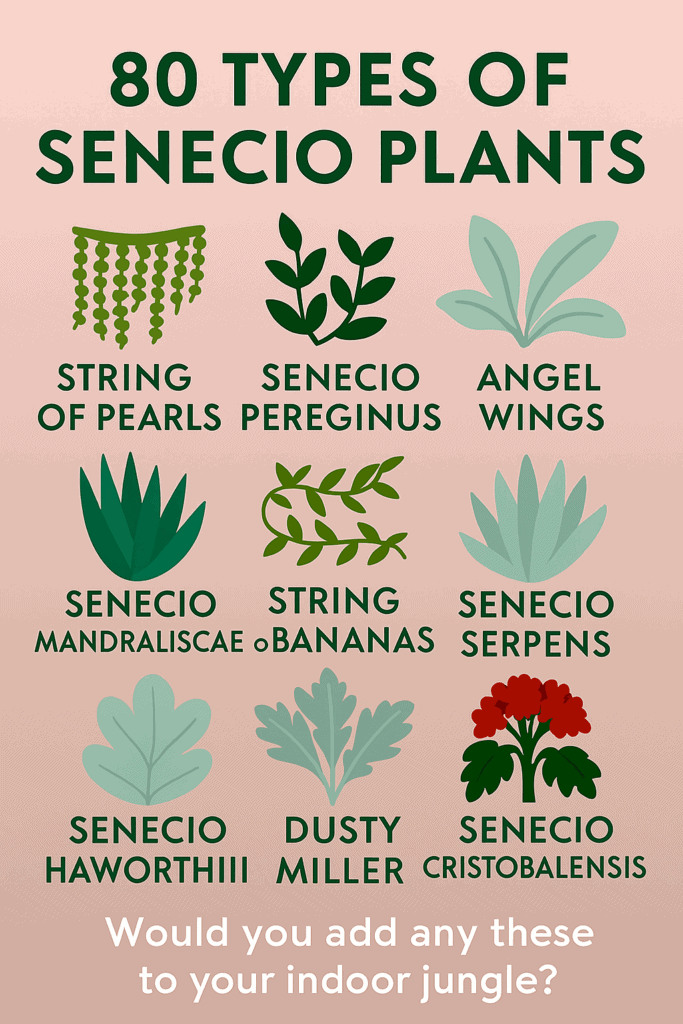
Contents
- 1 Succulent Senecios
- 1.1 Senecio aloides
- 1.2 Senecio anteuphorbium
- 1.3 Senecio articulatus
- 1.4 Senecio barbertonicus (Succulent Bush Senecio)
- 1.5 Senecio cephalophorus
- 1.6 Senecio crassiflorus
- 1.7 Senecio crassissimus
- 1.8 Senecio gregorii
- 1.9 Senecio haworthii (Cocoon Plant)
- 1.10 Senecio herreanus
- 1.11 Senecio jacobsenii
- 1.12 Senecio kleiniiformis
- 1.13 Senecio macroglossus
- 1.14 Senecio macroglossus ‘Variegatus’
- 1.15 Senecio mandraliscae (Blue Chalksticks)
- 1.16 Senecio maritimus
- 1.17 Senecio peregrinus (String of Dolphins)
- 1.18 Senecio radicans (String of Bananas)
- 1.19 Senecio rowleyanus (String of Pearls)
- 1.20 Senecio scaposus
- 1.21 Senecio serpens
- 1.22 Senecio tamoides
- 2 Foliage-Focused Senecios
- 3 Flowering Annual Senecios
- 4 Flowering Perennial Senecios
- 4.1 Senecio abbreviatus (Short Ragwort)
- 4.2 Senecio abruptus
- 4.3 Senecio achilleifolius
- 4.4 Senecio acutifolius
- 4.5 Senecio acutipinnus
- 4.6 Senecio adenophyllus
- 4.7 Senecio adenotrichius
- 4.8 Senecio adglacialis
- 4.9 Senecio adnatus
- 4.10 Senecio aetfatensis
- 4.11 Senecio affinis
- 4.12 Senecio agapetes
- 4.13 Senecio albifolius
- 4.14 Senecio alloeophyllus
- 4.15 Senecio alpinus
- 4.16 Senecio altissimus
- 4.17 Senecio amplectens
- 4.18 Senecio angulatus
- 4.19 Senecio antandroi
- 4.20 Senecio bahioides
- 4.21 Senecio brasiliensis
- 4.22 Senecio cerberoanus
- 4.23 Senecio chilensis
- 4.24 Senecio confusus
- 4.25 Senecio cristobalensis
- 4.26 Senecio flaccidus
- 4.27 Senecio fistulosus
- 4.28 Senecio fulgens
- 4.29 Senecio glastifolius
- 4.30 Senecio hercynicus
- 4.31 Senecio inaequidens
- 4.32 Senecio integerrimus
- 4.33 Senecio jacobaea
- 4.34 Senecio linearifolius
- 4.35 Senecio nemorensis
- 4.36 Senecio ovatus
- 4.37 Senecio pulcher
- 4.38 Senecio squalidus
- 5 How to Care for Senecio Plants
Succulent Senecios
Senecio aloides
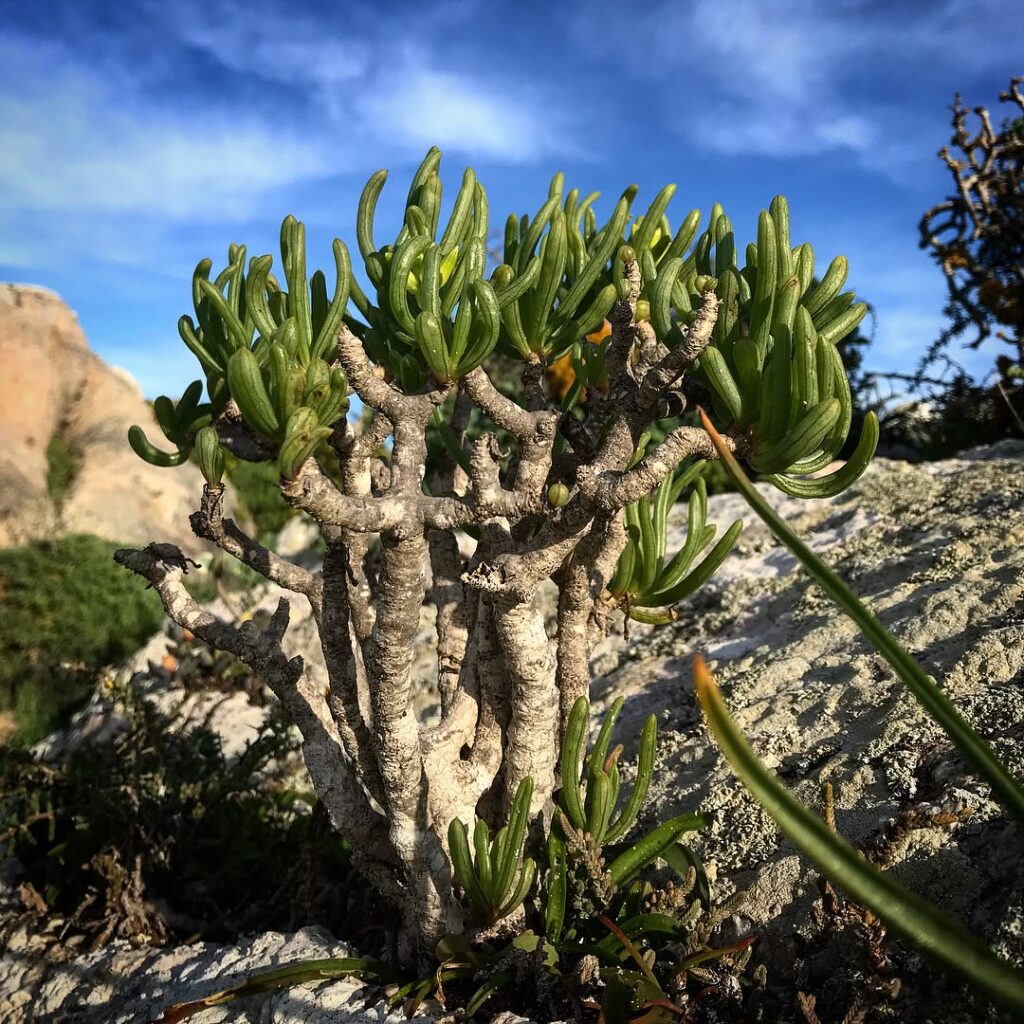
Senecio aloides is a succulent shrublet with terete-cylindrical leaves that cluster at the tips, giving it a compact, fleshy appearance. It produces solitary yellow flowers on sparsely bracteate peduncles, thriving in coastal rocks and dunes from southern Namibia to the Cape Peninsula.
Senecio anteuphorbium
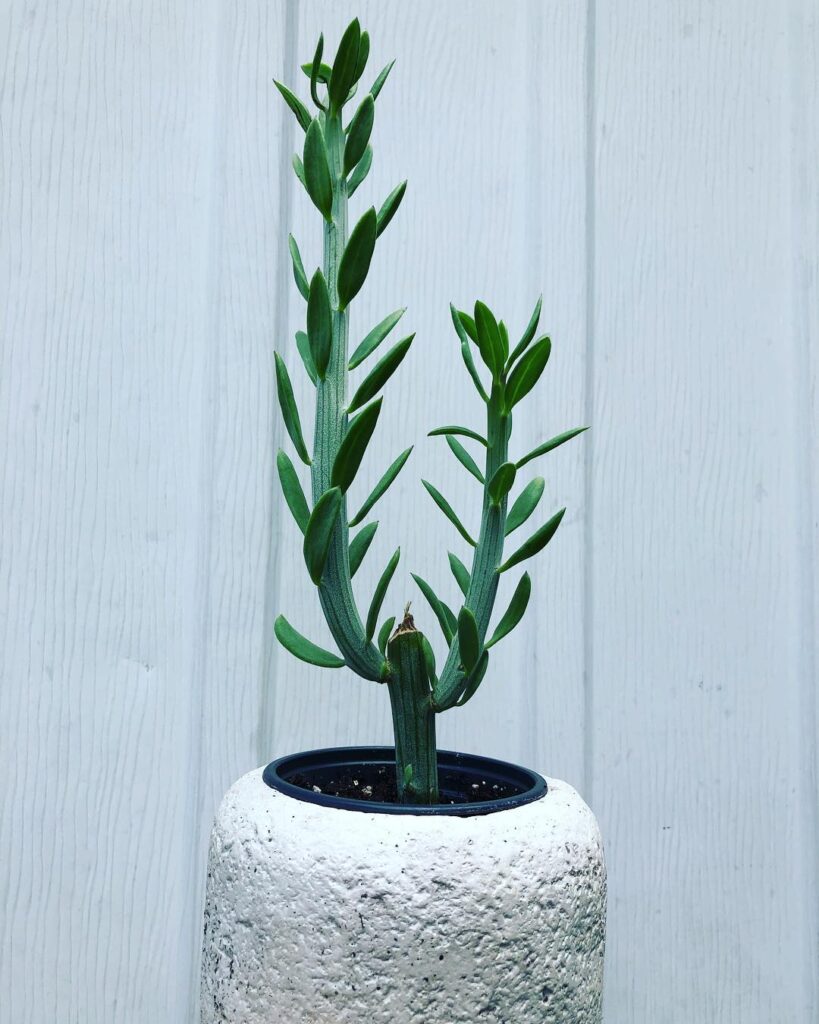
Senecio anteuphorbium, also known as Swizzle Sticks, is a succulent shrub native to North Africa and the Arabian Peninsula, featuring gray-green, segmented stems with darker striations. It thrives in arid conditions, shedding its small leaves seasonally, and produces rayless white flowers with yellow stigmas in fall and winter. This drought-tolerant plant prefers well-drained soil and bright light, making it ideal for succulent gardens.
Senecio articulatus
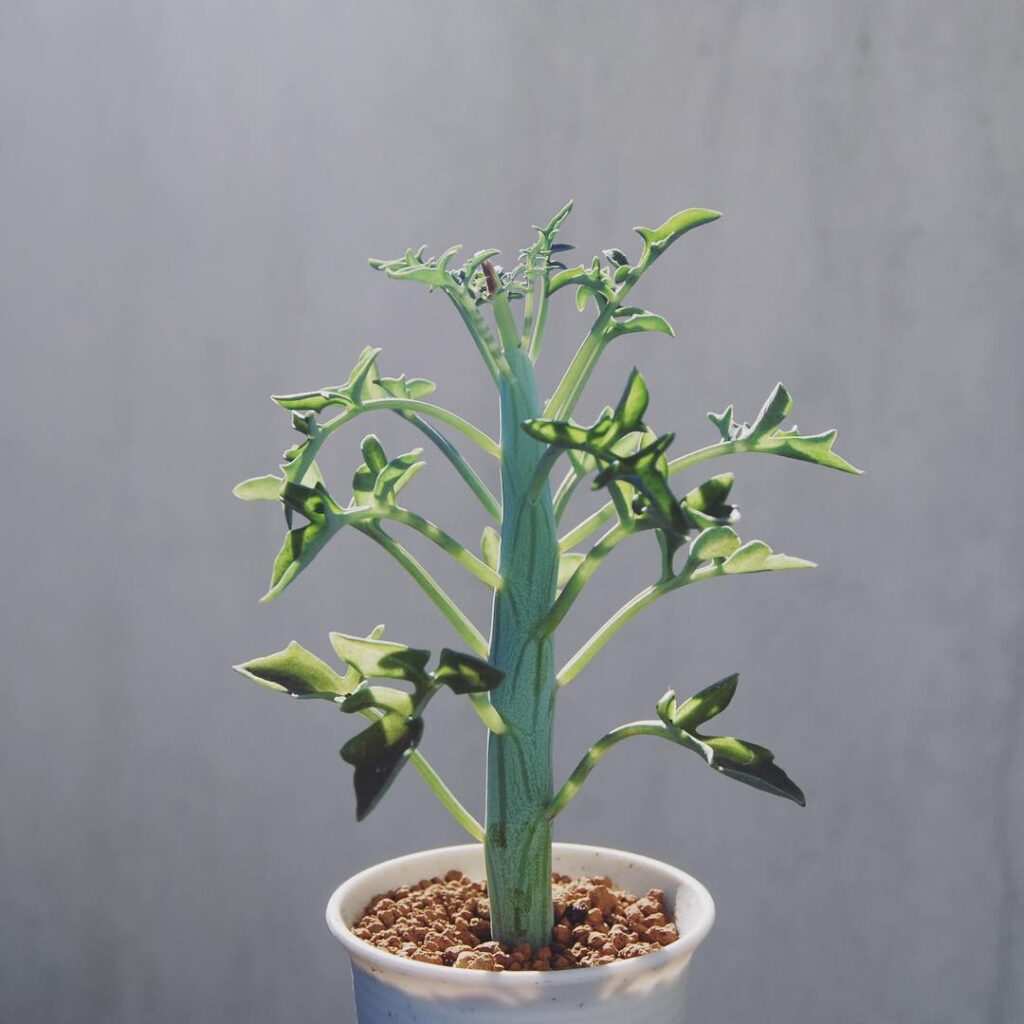
Senecio articulatus, commonly known as Candle Plant, is a deciduous succulent native to South Africa, featuring segmented, sausage-shaped stems with gray-green coloration and darker markings. It sheds its small, fleshy leaves seasonally and produces tiny, rayless white flowers in winter, thriving in dry, well-drained environments.
Senecio barbertonicus (Succulent Bush Senecio)
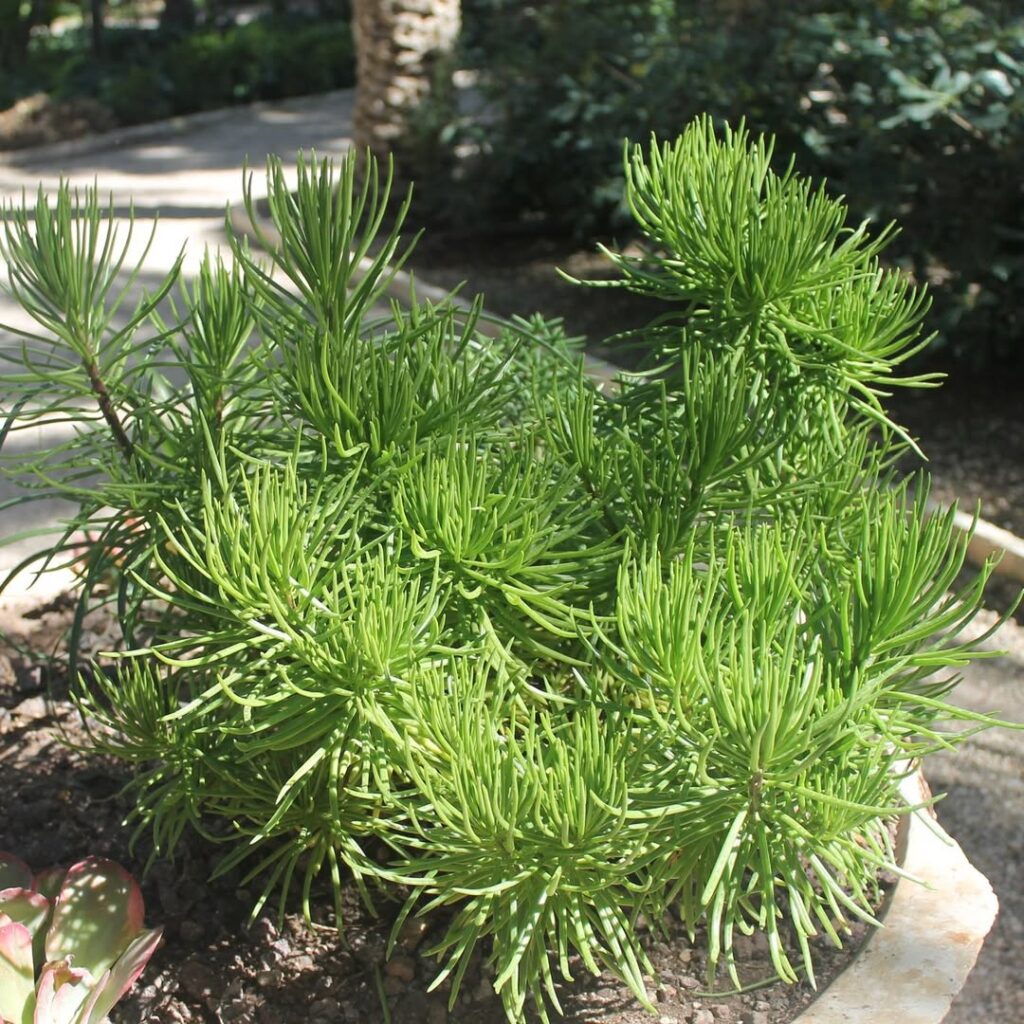
Unlike trailing Senecios, this species forms an upright, bushy shrub with needle-like leaves. It’s a resilient plant that thrives in sunny conditions and can tolerate drought. In the growing season, it produces cheerful yellow flowers, making it a great addition to gardens.
Senecio cephalophorus
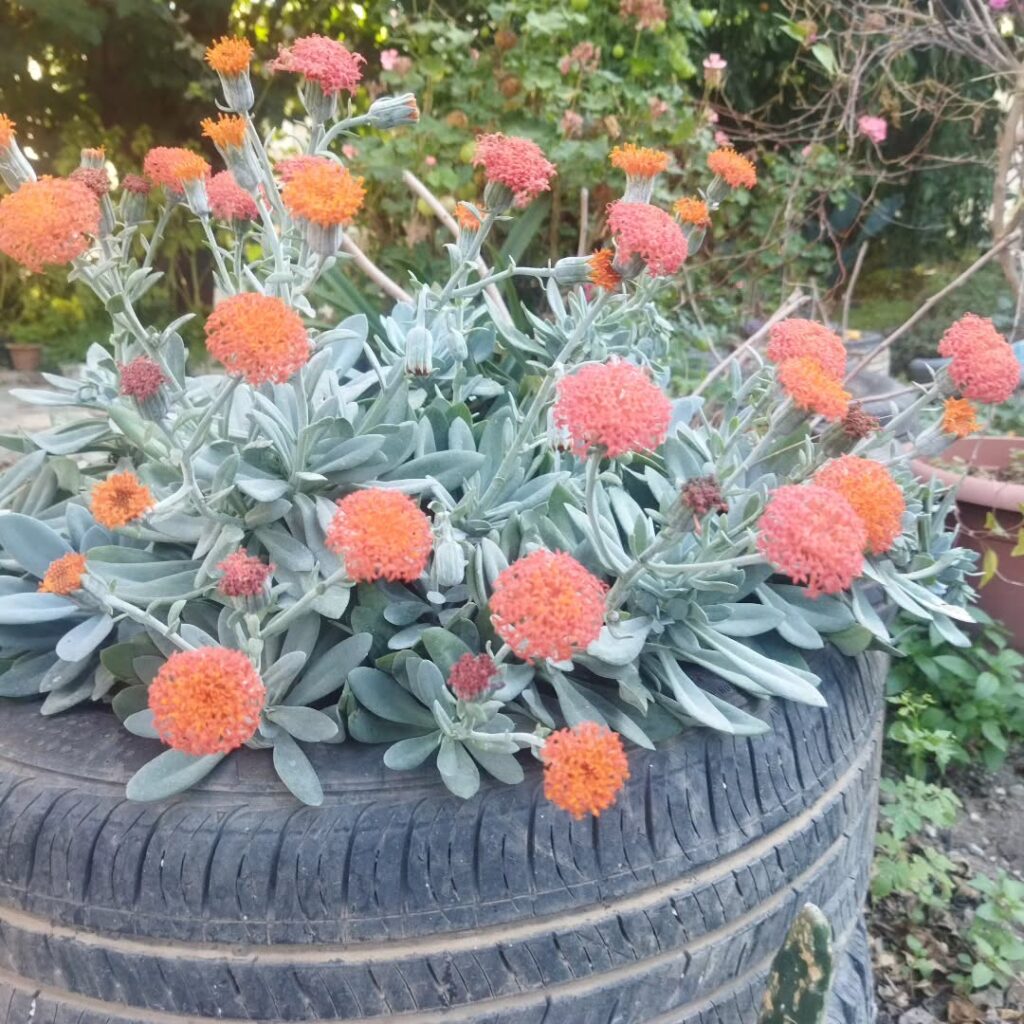
Senecio cephalophorus, also known as Mountain Fire, is a compact succulent shrub with paddle-shaped, blue-green leaves and large, dark-orange flower heads that bloom above the foliage. It thrives in bright, well-drained environments and is drought-tolerant, making it ideal for indoor and outdoor gardens.
Senecio crassiflorus
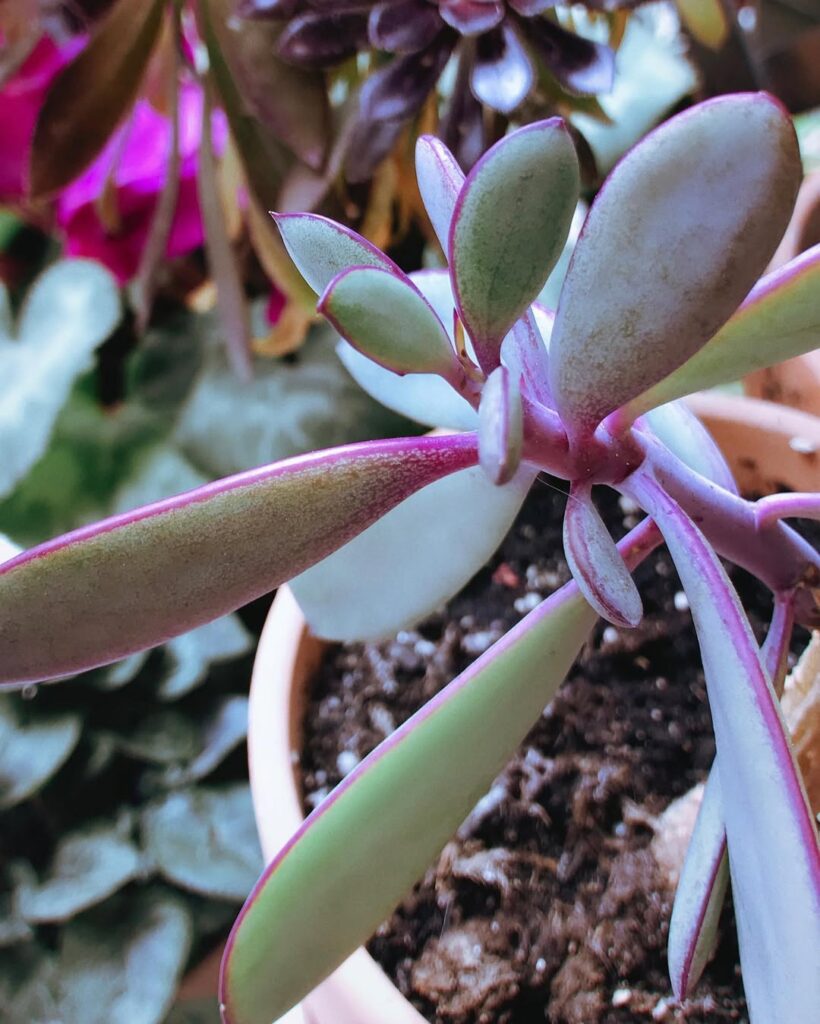
Senecio crassiflorus, also known as Margarida das Dunas, is a herbaceous perennial native to South American coastal dunes, particularly in Brazil, Argentina, and Uruguay. It has silvery to white woolly foliage, with spatula-shaped leaves that taper at the base and broad rounded tips. Its bell-shaped yellow flowers, measuring 1–1.5 cm in diameter, appear singly or in small clusters, and the plant spreads vegetatively rather than by seed.
Senecio crassissimus
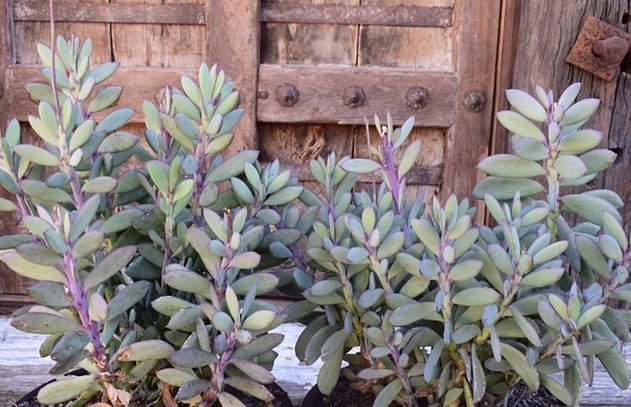
Senecio crassissimus, also known as Vertical Leaf Senecio, is a succulent shrub native to Madagascar, characterized by upright, obovate leaves with purple margins that orient vertically to minimize sun exposure. It produces bright yellow flowers on tall, branched stalks, thriving in dry, rocky environments with high drought tolerance.
Senecio gregorii
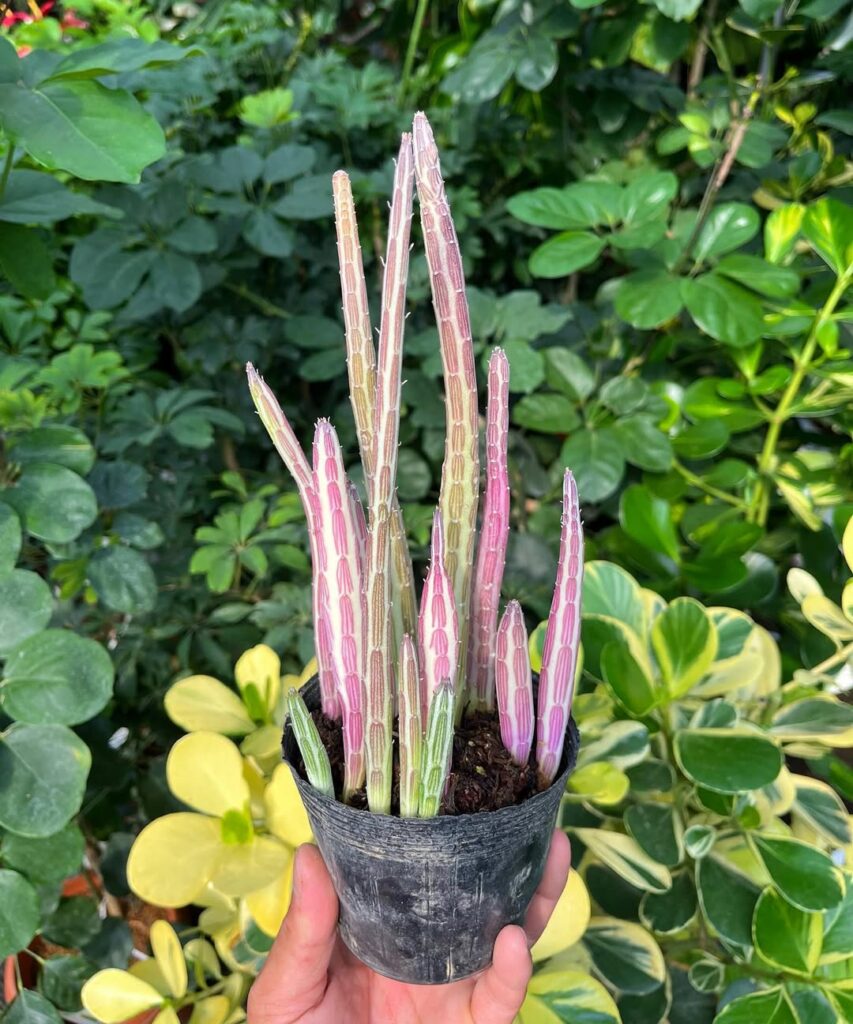
Senecio gregorii, also known as annual yellowtop or fleshy groundsel, is an erect annual herb native to arid and semi-arid regions of Australia. It grows 15–40 cm tall, with linear, fleshy leaves and clusters of bright yellow flowers that bloom from May to October.
Senecio haworthii (Cocoon Plant)

With silvery-white, fuzzy leaves, this compact succulent looks like it’s wrapped in a soft cocoon. It thrives in bright indoor spaces with minimal watering, making it a great choice for low-maintenance gardening. Good air circulation helps maintain its distinctive appearance.
Senecio herreanus
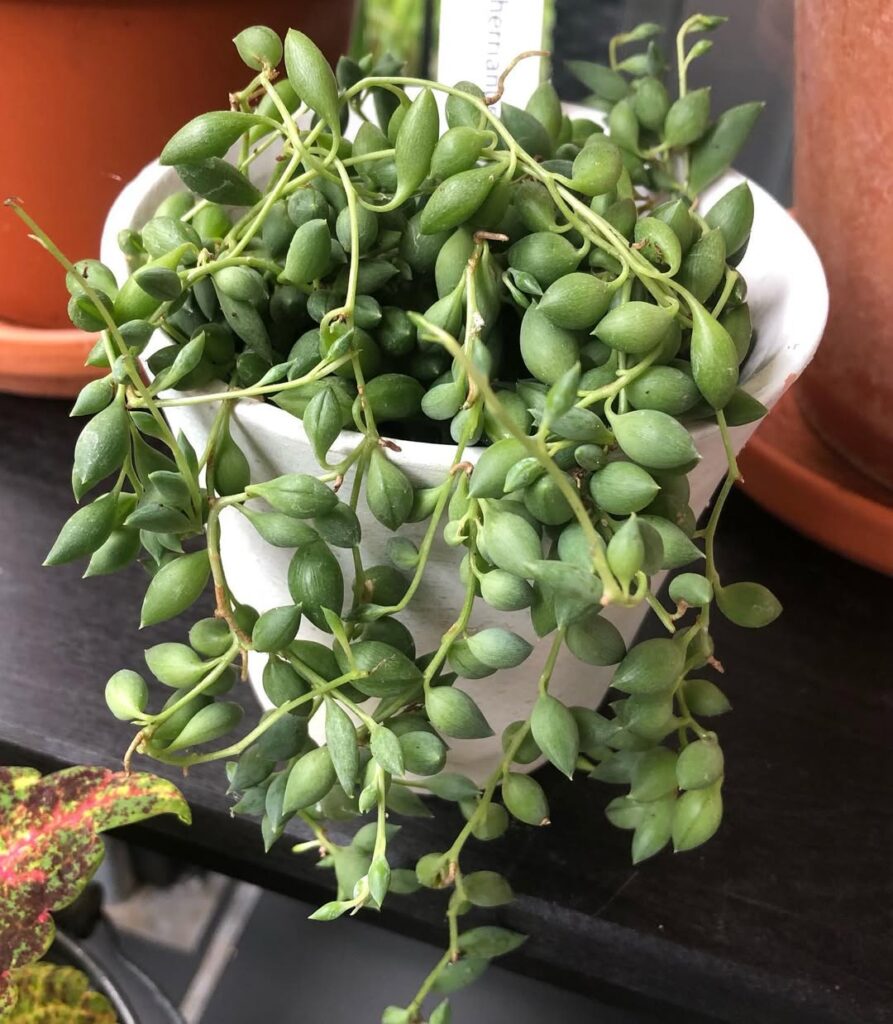
Senecio herreanus, commonly called String of Watermelons, is a trailing succulent with small, bead-like leaves marked with purple stripes, resembling tiny watermelons. Native to Namibia, it thrives in dry conditions, producing small, white flowers with a cinnamon-like fragrance.
Senecio jacobsenii

Senecio jacobsenii, commonly known as Trailing Jade, is a succulent vine native to Kenya and Tanzania. It features thick, fleshy stems that cascade over containers or spread along the ground, with overlapping, oval-shaped green leaves that turn purple under stress. This plant thrives in bright, well-drained environments and produces small, orange flowers in late fall or winter.
Senecio kleiniiformis
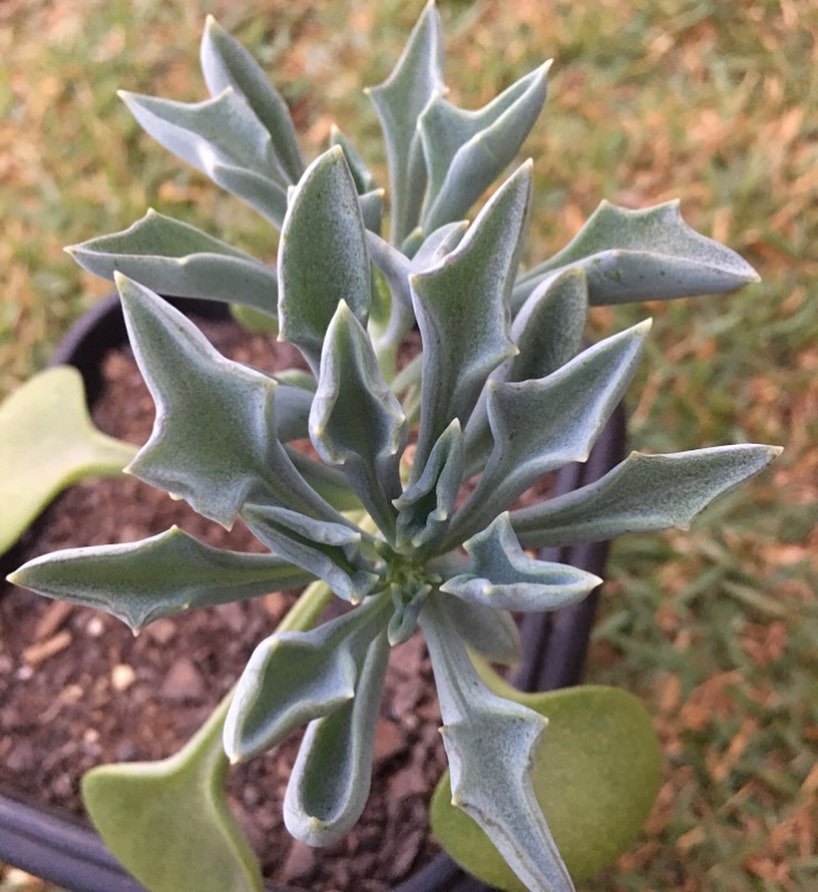
Senecio kleiniiformis, also called Spear Head, is a slow-growing succulent with trailing or ascending branches and soft, fleshy, bluish-green leaves shaped like arrowheads or reindeer antlers. It produces pale yellow flowers in late summer and prefers bright, indirect light and well-drained soil, making it ideal for containers and rock gardens.
Senecio macroglossus
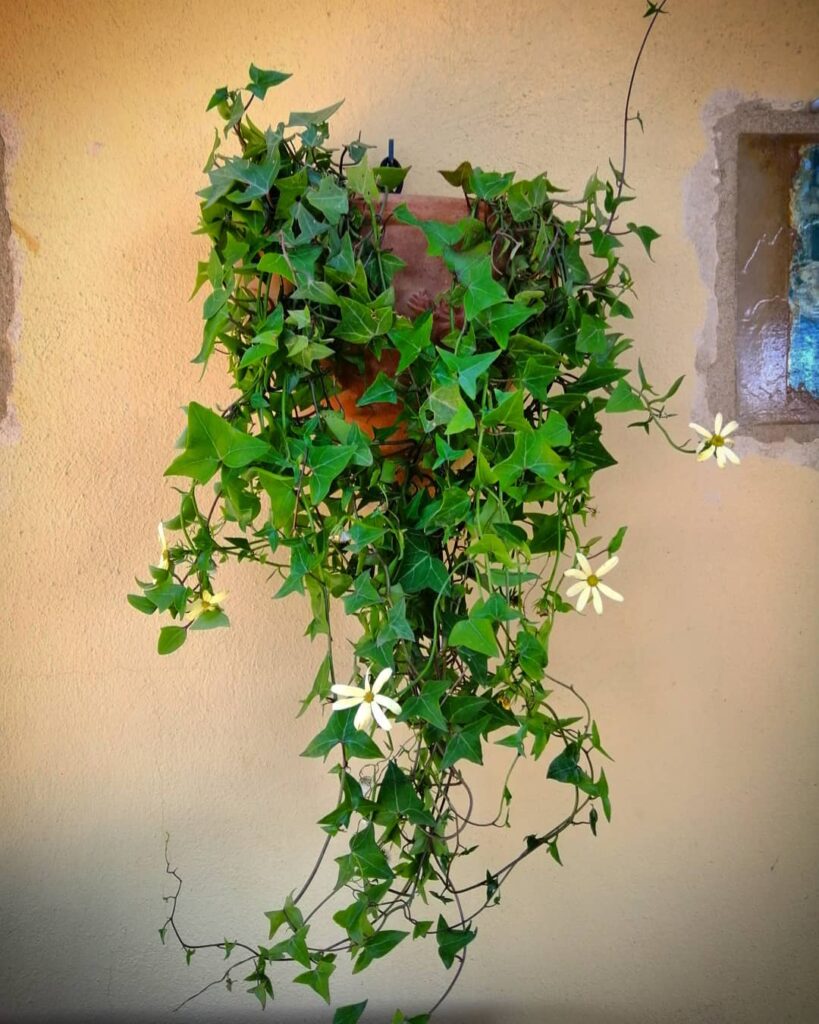
Senecio macroglossus, also known as Wax Ivy or Natal Ivy, is an evergreen succulent climber native to southern Africa, growing up to 3 meters long with smooth, triangular, ivy-like leaves. It produces large, pale yellow daisy-like flowers in summer and thrives in warm, well-drained environments.
Senecio macroglossus ‘Variegatus’
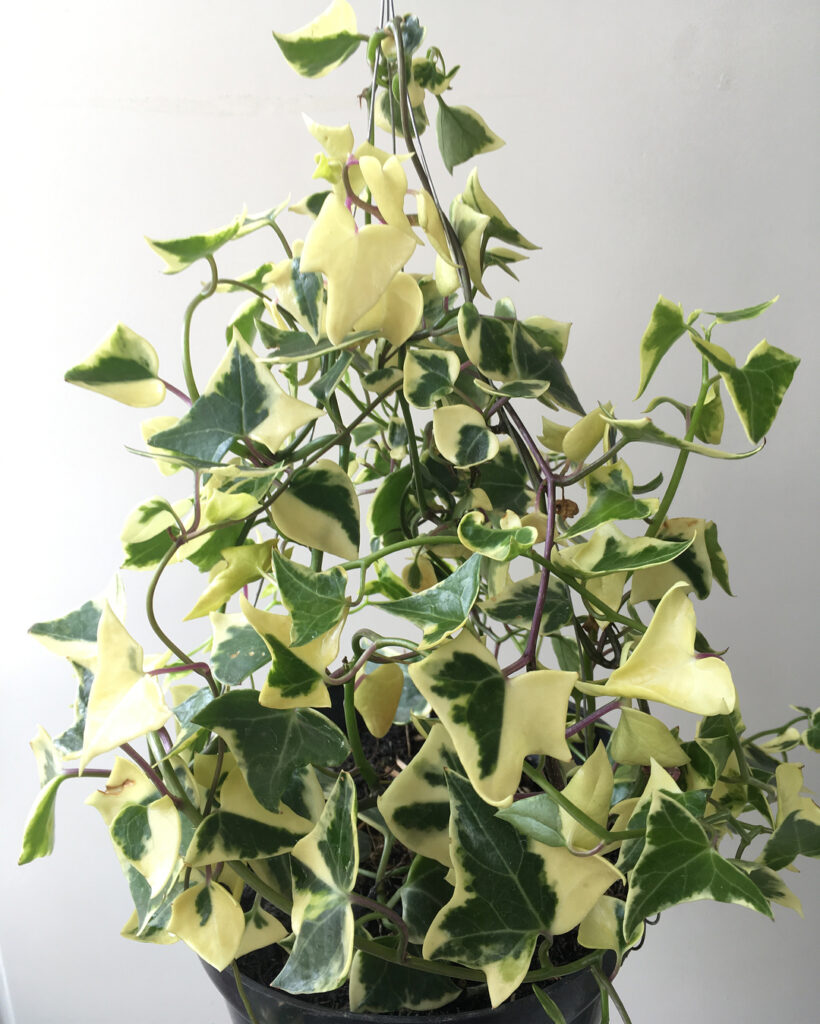
Senecio macroglossus ‘Variegatus’, also known as Variegated Wax Ivy, is a trailing succulent vine with green leaves splashed with creamy white. It produces large, pale yellow flowers and thrives in bright, well-drained environments.
Senecio mandraliscae (Blue Chalksticks)
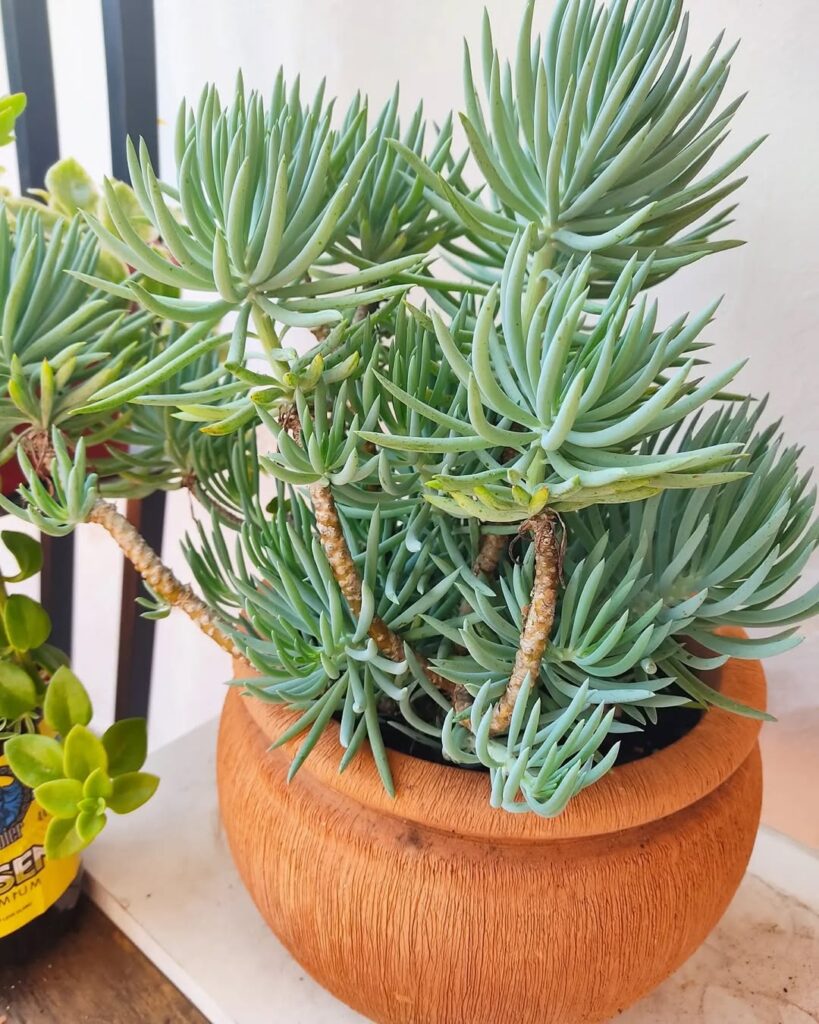
Recognized for its striking blue-gray, finger-like leaves, this ground-cover succulent thrives in dry, sunny conditions. It’s perfect for adding texture to succulent arrangements or landscapes. It tolerates drought well and needs sandy, well-draining soil.
Senecio maritimus
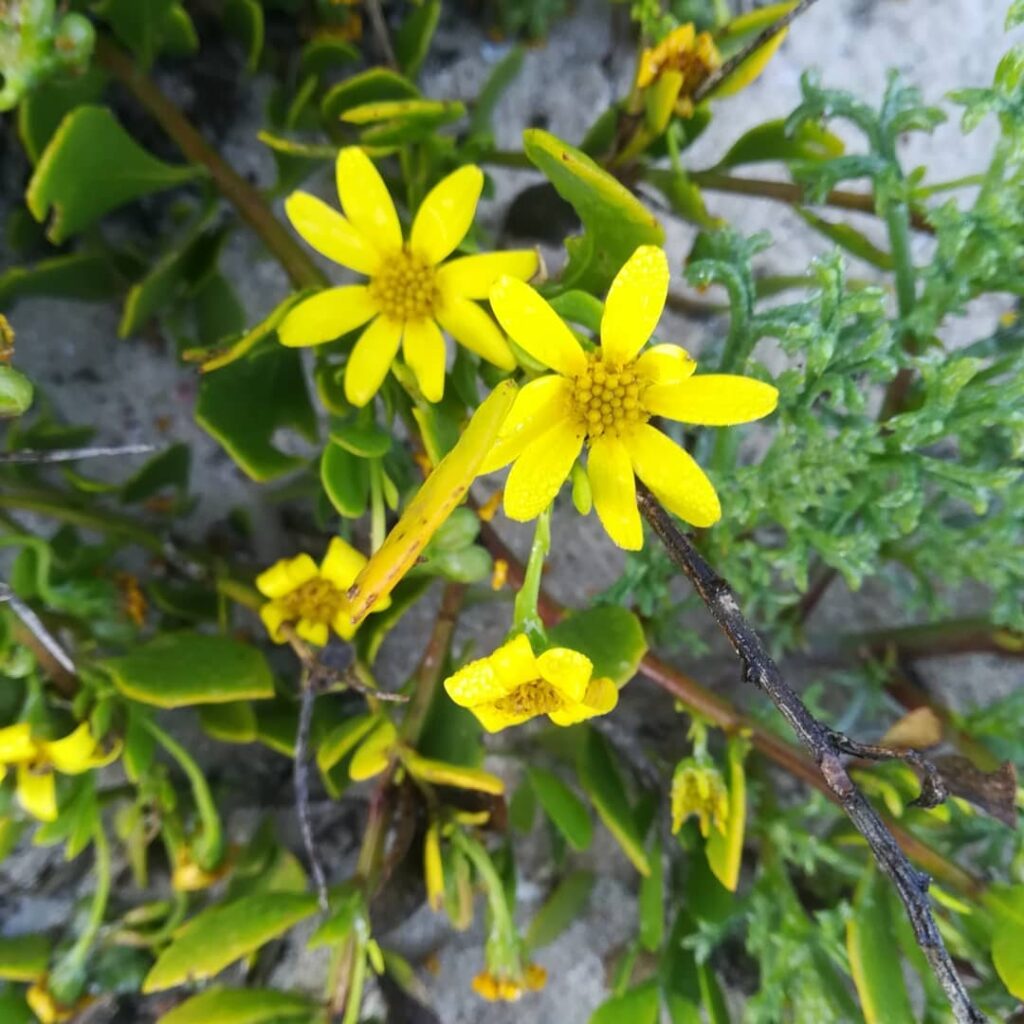
Senecio maritimus is a flowering plant native to the Cape Provinces of South Africa, first described in 1782. It features yellow flowers and thrives in coastal habitats, adapting well to sandy and rocky soils.
Senecio peregrinus (String of Dolphins)
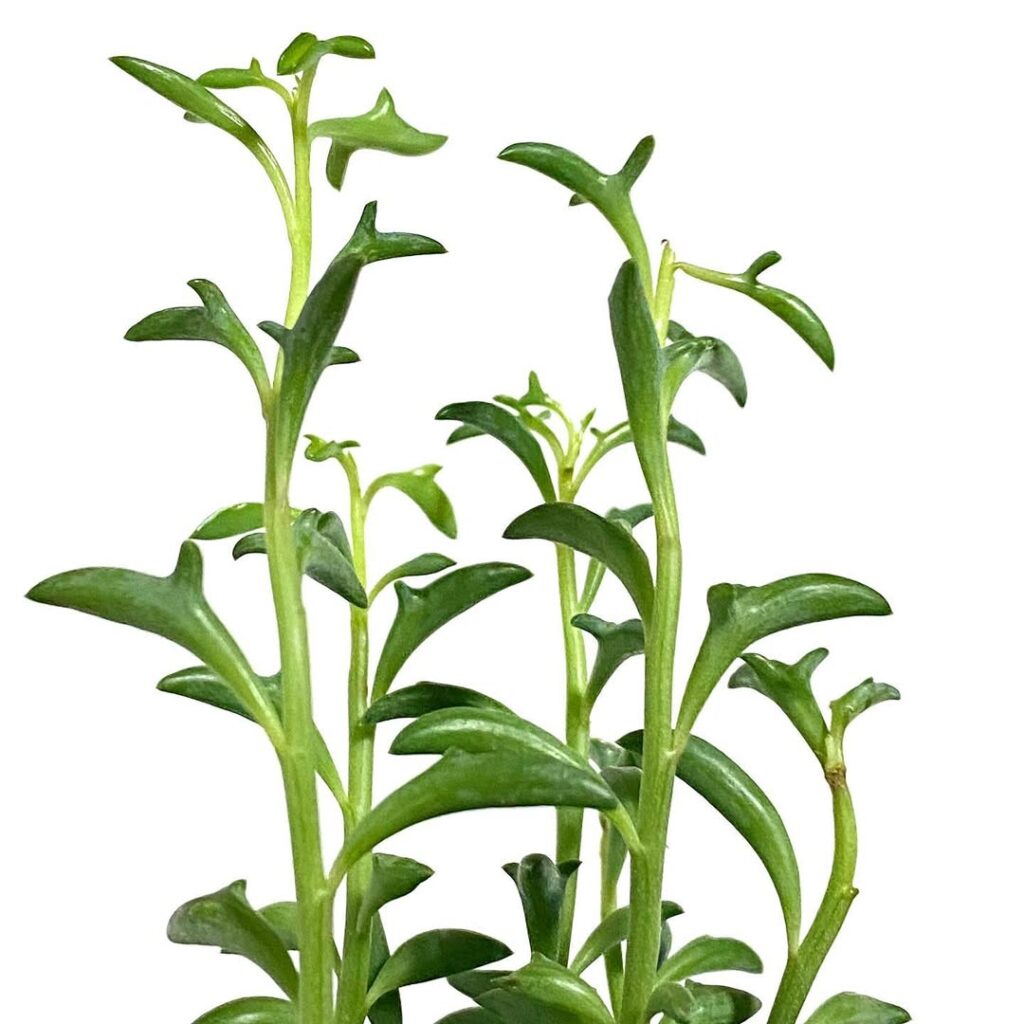
This adorable trailing succulent has curved leaves that resemble leaping dolphins! It’s an eye-catching houseplant that thrives in bright light with infrequent watering. The unique foliage makes it a great conversation starter.
Senecio radicans (String of Bananas)
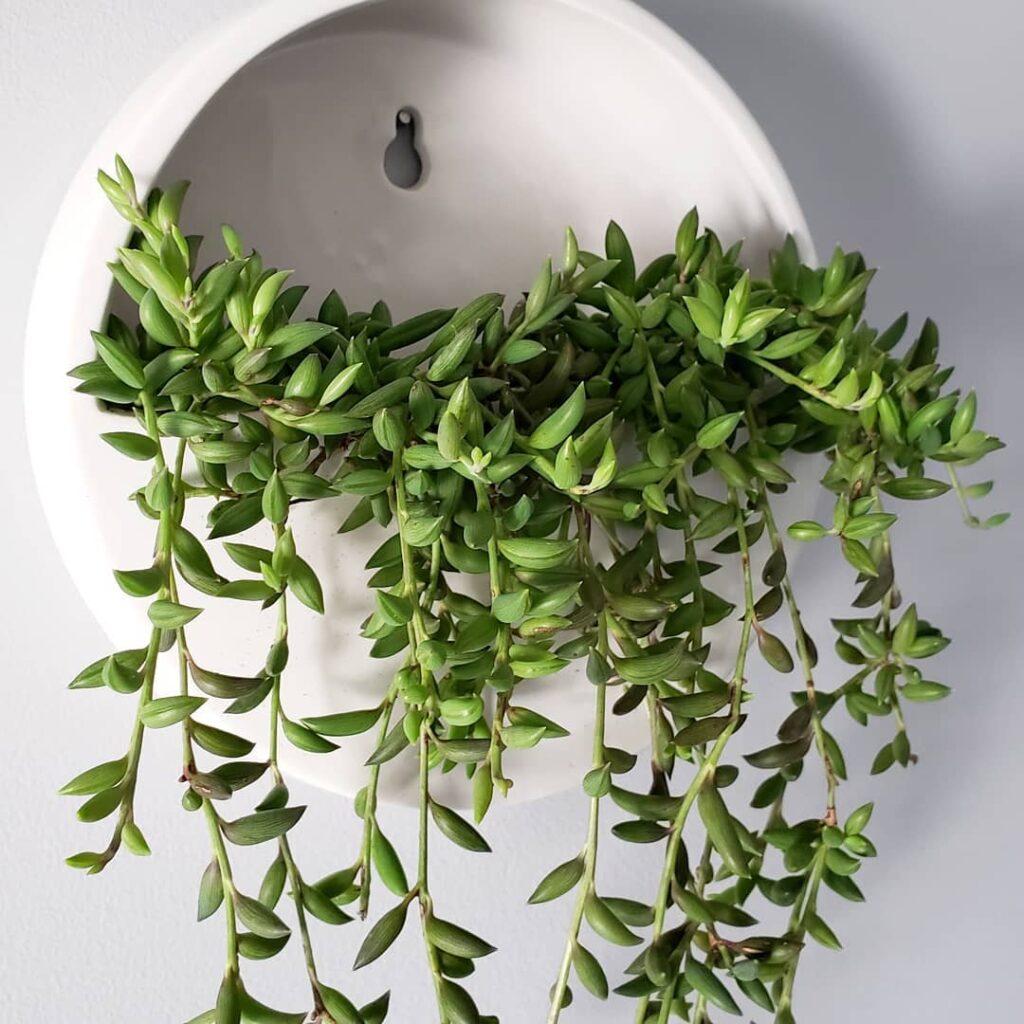
Similar to String of Pearls, this cascading plant has crescent-shaped leaves that resemble tiny bananas. It’s fast-growing and perfect for hanging baskets. Keep it in a warm, sunny location and water sparingly.
Senecio rowleyanus (String of Pearls)

One of the most famous Senecios, String of Pearls has trailing vines covered in bead-like leaves. It’s a popular indoor succulent that thrives in indirect light and requires minimal watering. Its delicate, cascading growth makes it ideal for shelves or hanging pots.
Senecio scaposus
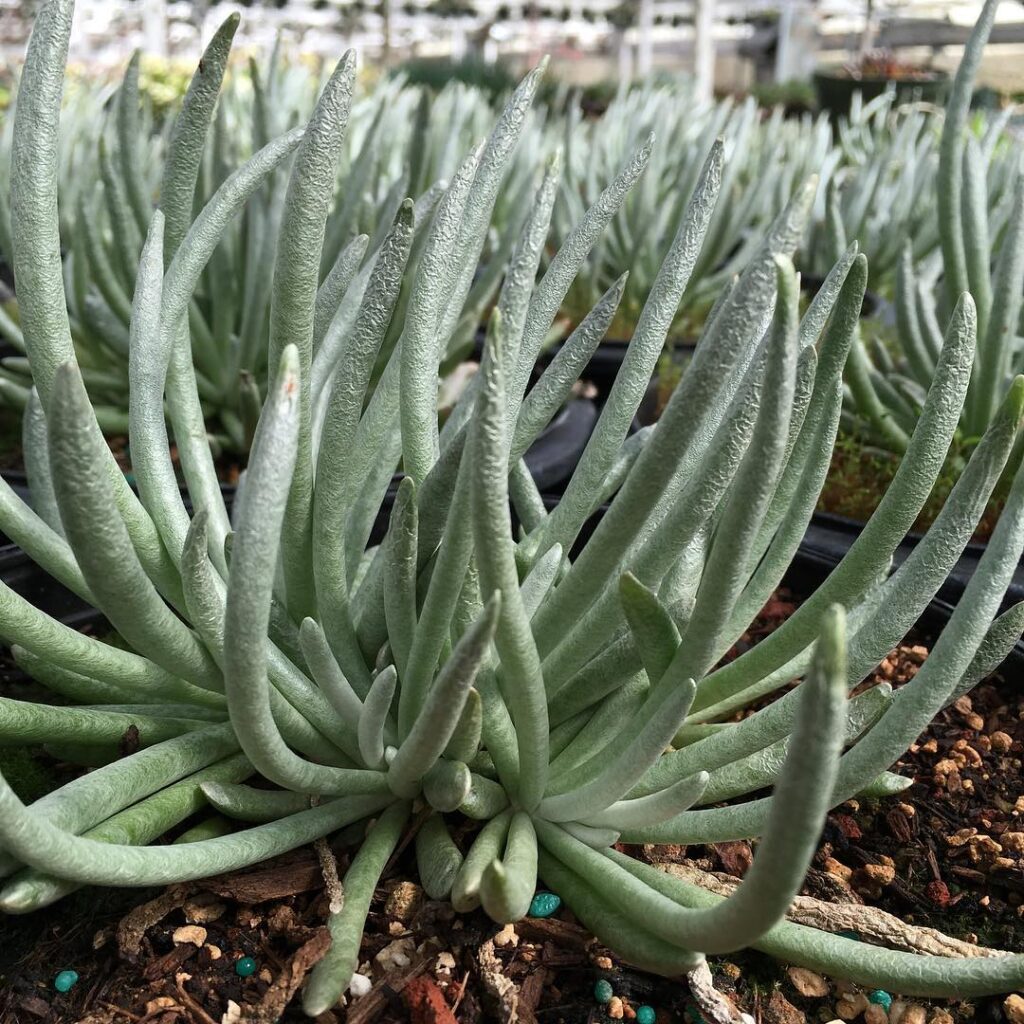
Senecio scaposus, also known as Woolly Senecio, is a compact succulent native to South Africa, featuring silver-white, cylindrical leaves covered in fine hairs. It thrives in rocky, arid environments, producing bright yellow, daisy-like flowers in summer.
Senecio serpens
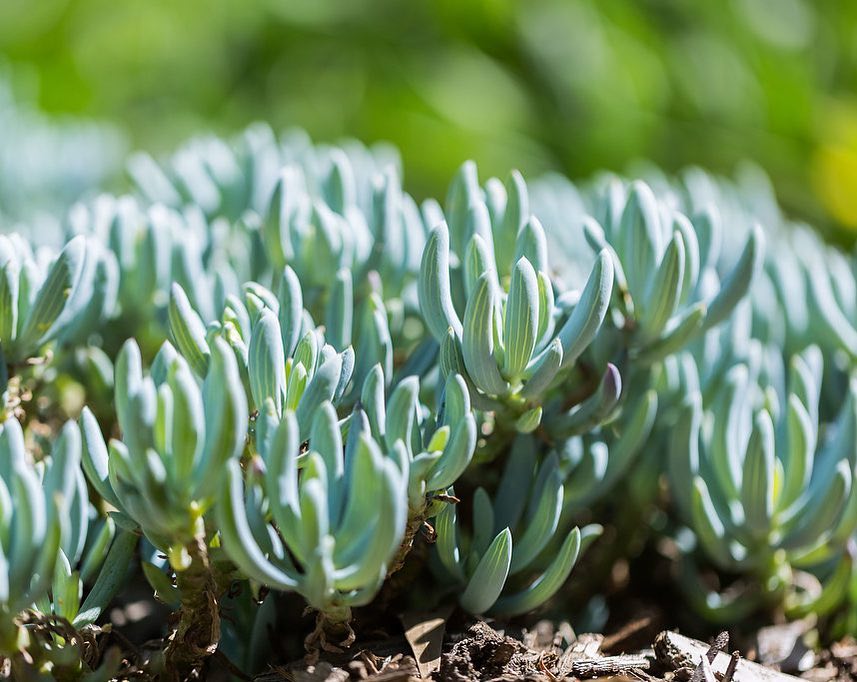
Senecio serpens, commonly known as Blue Chalksticks, is a low-growing succulent with powdery blue-green, cylindrical leaves that form dense mats. It thrives in dry, well-drained soils and is often used as ground cover in rock gardens. In summer, it produces small, creamy-white flowers above its foliage.
Senecio tamoides

Senecio tamoides, also known as Canary Creeper, is a fast-growing, evergreen succulent climber native to Southern Africa. It features bright green, ivy-like leaves and large, fragrant yellow flowers that bloom from mid-autumn to winter, thriving in forest margins and moist gullies.
Foliage-Focused Senecios
Senecio bicolor

Senecio bicolor, also known as Silver Ragwort, is a perennial shrub with silvery-gray, finely dissected leaves and yellow flowers. It thrives in coastal environments, often grown for its ornamental foliage.
Senecio candicans ‘Angel Wings’

This ornamental variety is prized for its oversized, silvery-white leaves that resemble angel wings. Its soft foliage makes it a standout in any garden or container. It prefers bright, indirect light and well-draining soil to maintain its lush, velvety appearance.
Senecio cineraria (Dusty Miller)
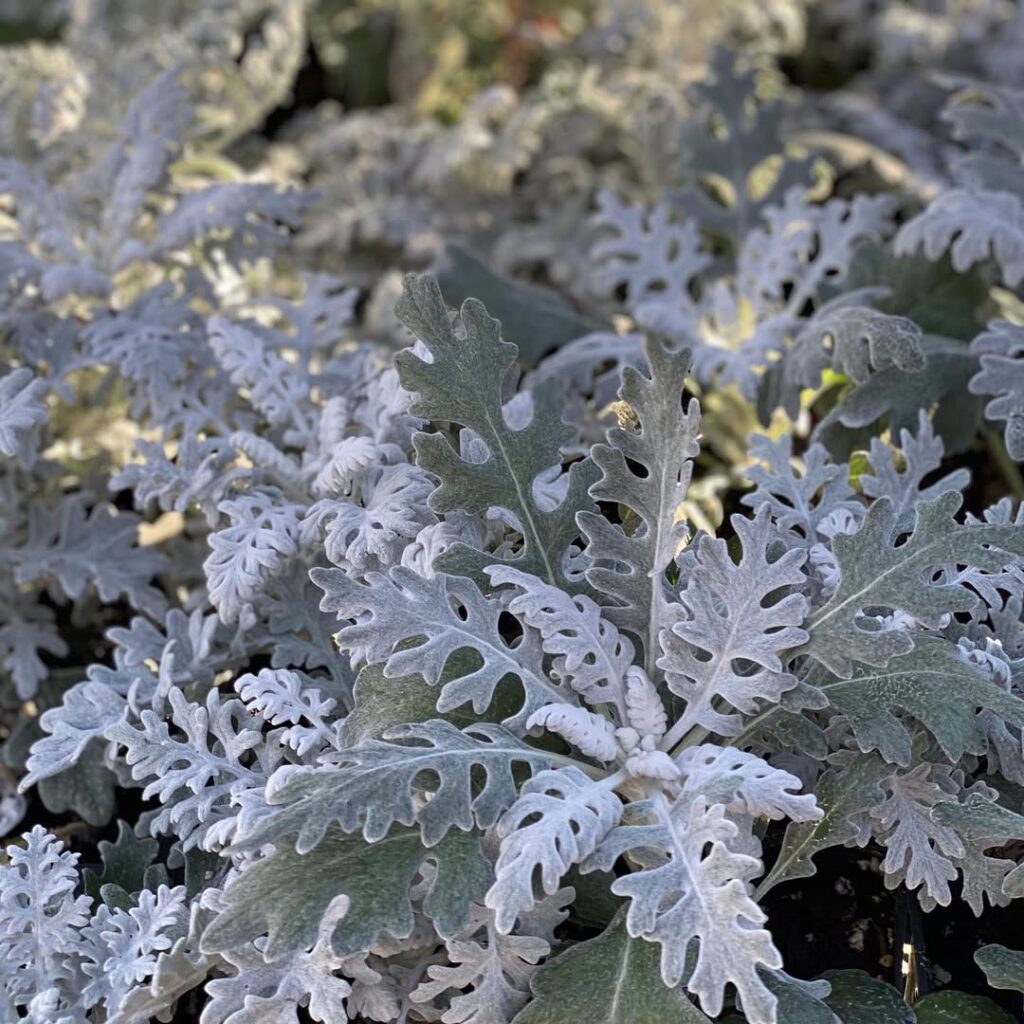
A well-known garden favorite, Dusty Miller boasts soft, silvery foliage and occasional small yellow flowers. It’s often grown for its decorative leaves, which contrast beautifully with other plants. It’s drought-tolerant and does best in a sunny spot.
Senecio oxyriifolius
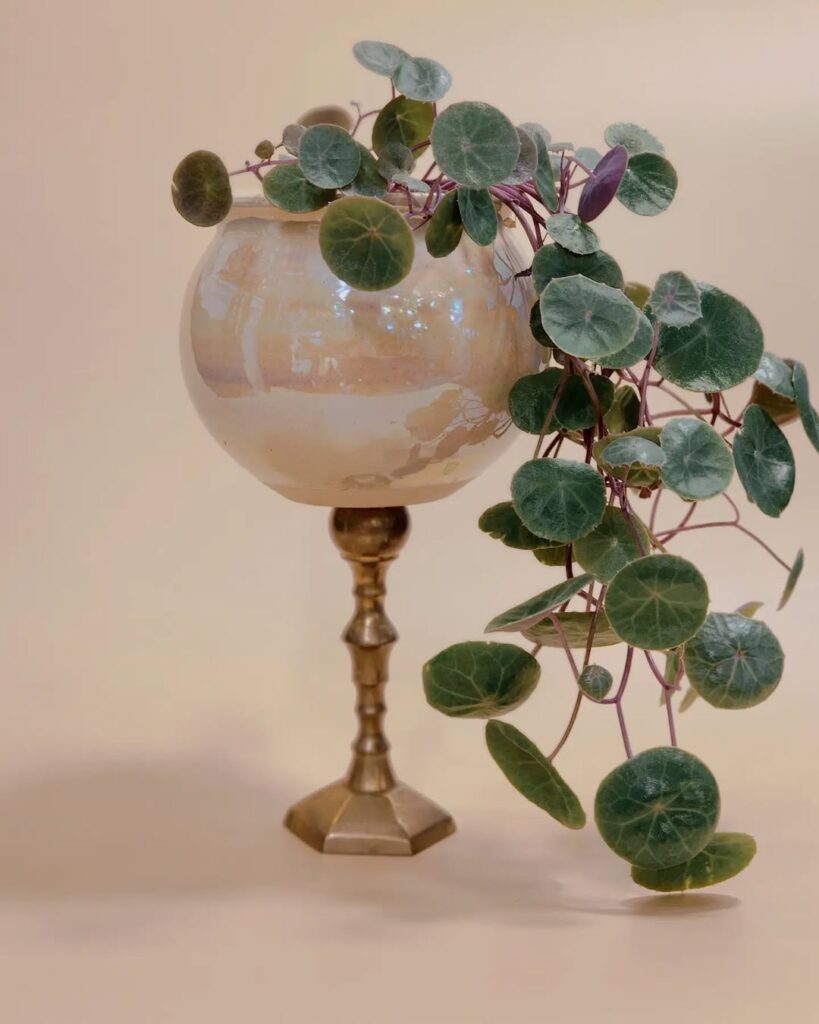
Senecio oxyriifolius, commonly called False Nasturtium, is a deciduous perennial herb with rounded, fleshy leaves and bright yellow flowers. It grows in high-altitude grasslands, often among rocks, and features a creeping tuberous rootstock.
Flowering Annual Senecios
Senecio ampullaceus
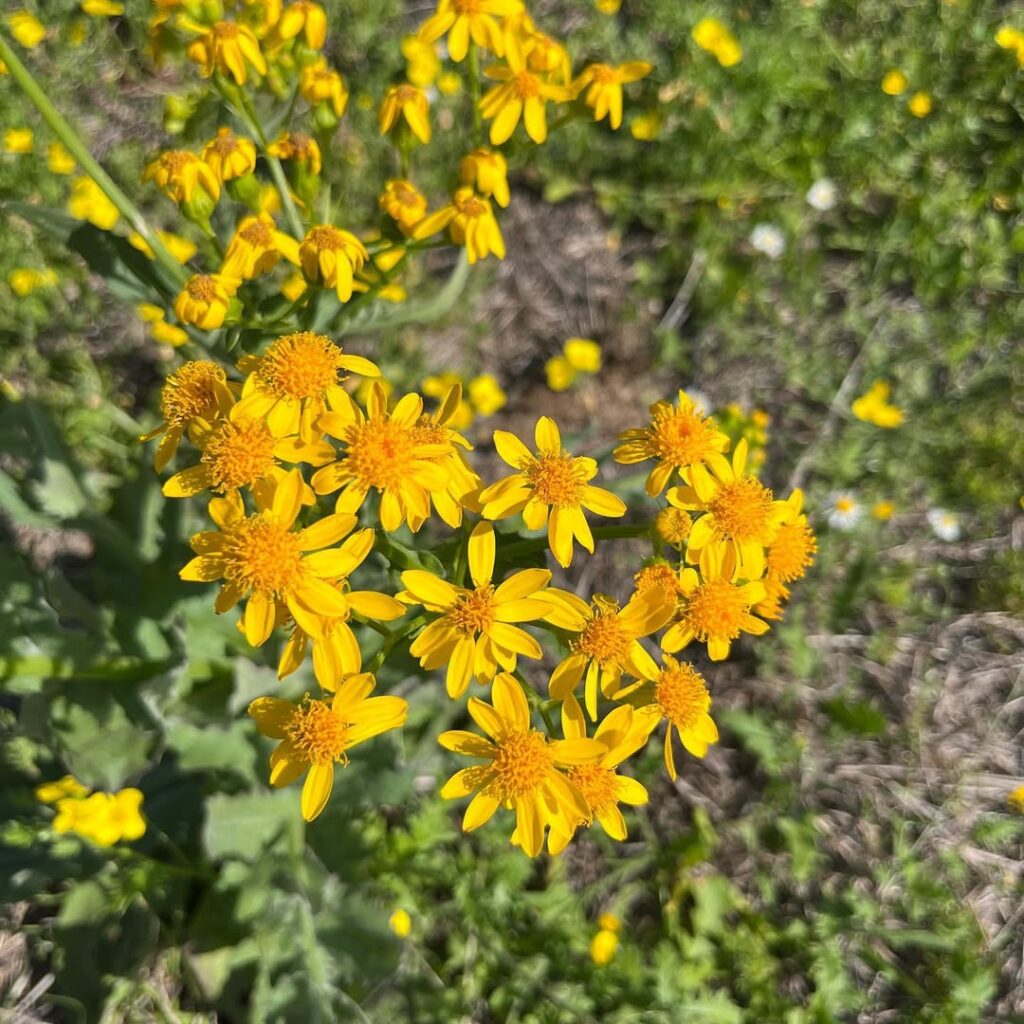
Senecio ampullaceus, also known as Texas ragwort, is a cool-season annual with deeply lobed green leaves and clusters of bright yellow flowers that bloom in early spring. It thrives in open sandy habitats and disturbed sites, often appearing after forest clearings.
Senecio bombayensis
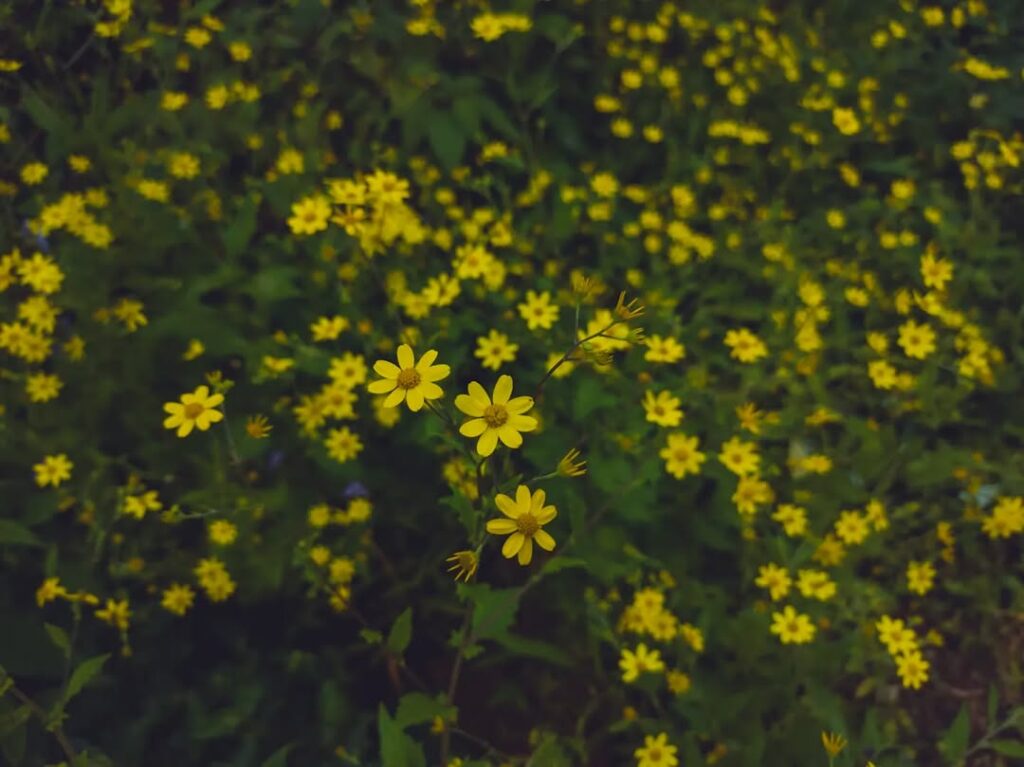
Senecio bombayensis, commonly known as Sonki, is an annual herbaceous plant native to the Western Ghats of India, growing between 30–100 cm tall. It features rhomboid-ovate leaves with cottony white tomentum underneath and produces bright yellow flowers in lax corymbs on slender peduncles.
Senecio californicus
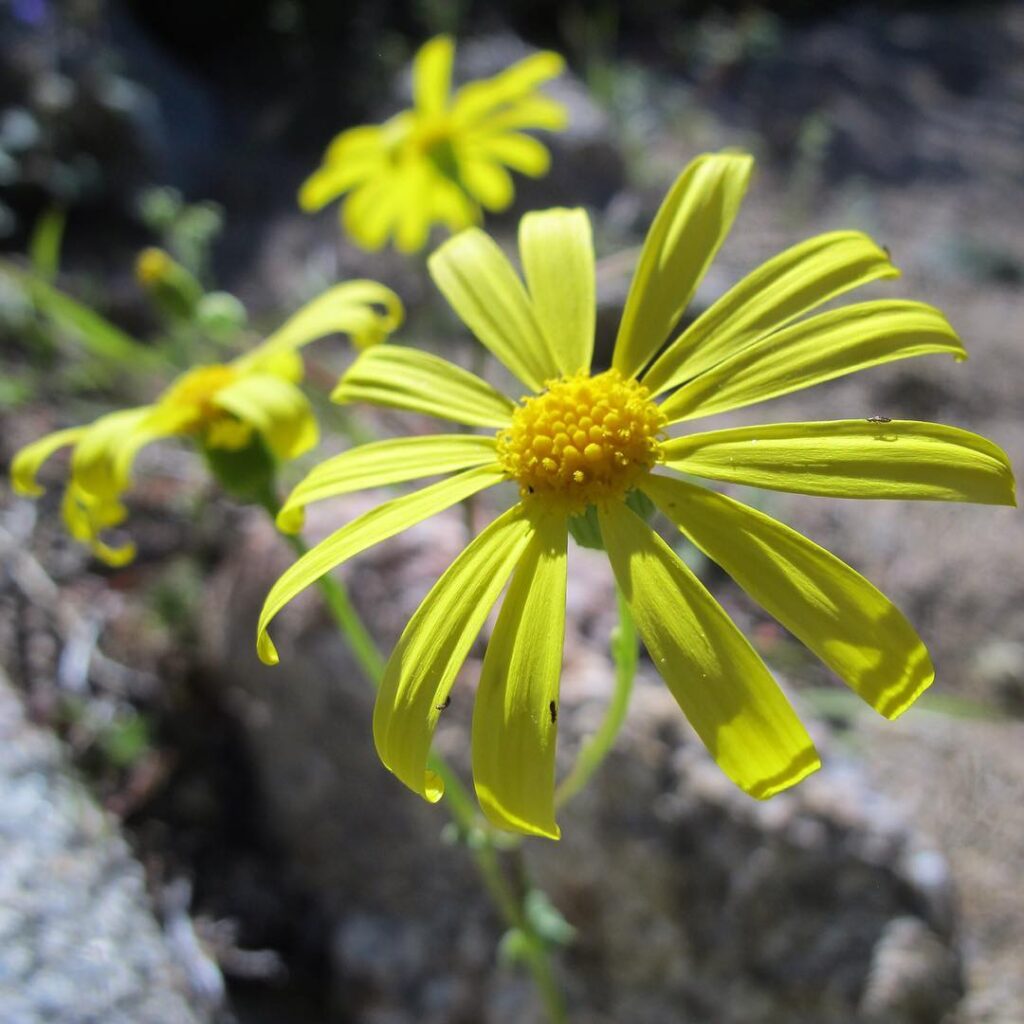
Senecio californicus, commonly known as California ragwort, is an annual herb native to Central and Southern California and Baja California, thriving in coastal dunes, chaparral, and sage scrub habitats. It grows 10–40 cm tall, with linear to lance-shaped leaves that can be fleshy in coastal populations, and produces bright yellow flowers with 13 ray florets, blooming from March to May.
Senecio cruentus
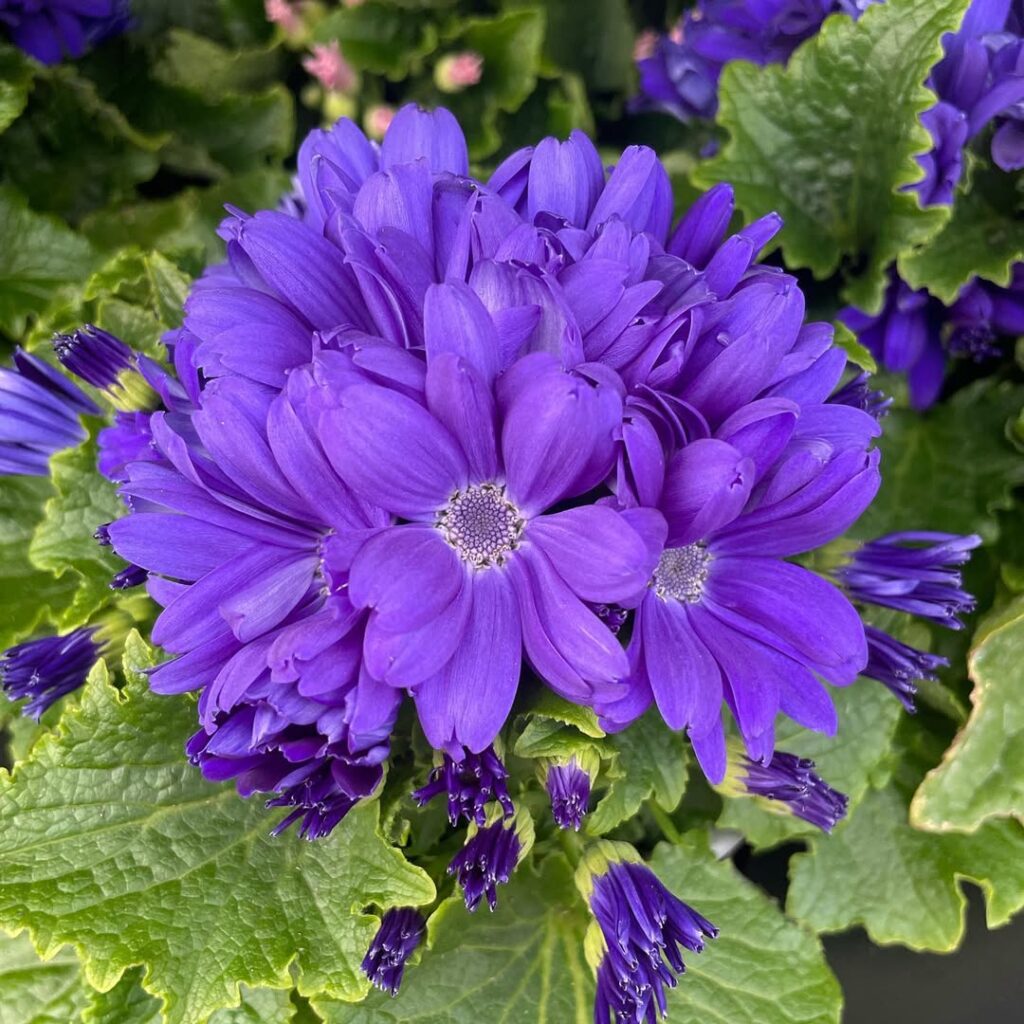
Senecio cruentus, also known as Florist’s Cineraria, is a colorful annual with daisy-like flowers in shades of red, pink, purple, and blue. It has large, dark green leaves that contrast beautifully with its blooms, making it a popular ornamental plant.
Senecio elegans
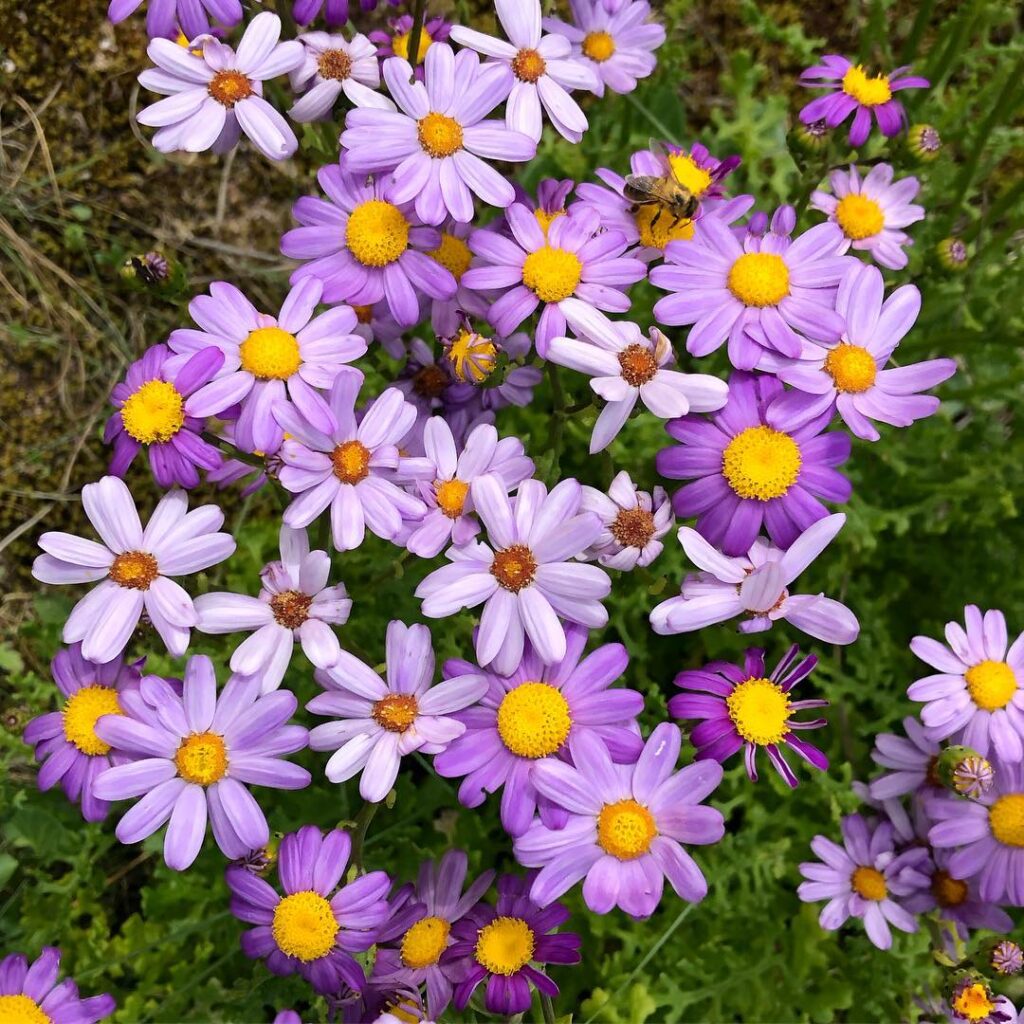
Senecio elegans, also known as redpurple ragwort or purple groundsel, is an annual herb native to South Africa, growing up to 60 cm tall with deeply lobed, sticky leaves. It produces bright purple to red-purple flowers with black-tipped phyllaries, thriving in coastal Mediterranean climates.
Senecio glaucus
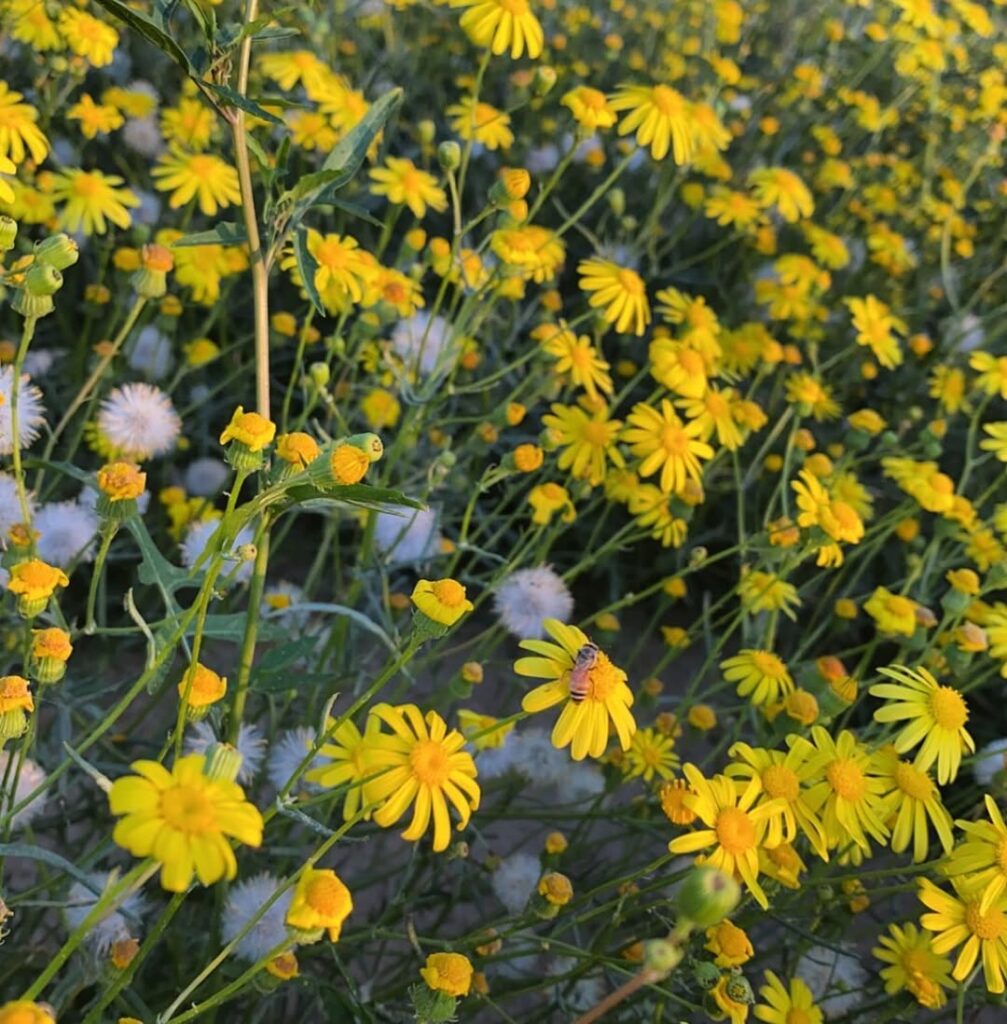
Senecio glaucus, also known as Jaffa groundsel, is an annual herb native to coastal and desert regions from the Mediterranean to Central Asia. It features yellow flowers and thrives in sandy, well-drained soils, particularly in coastal dunes and steppes.
Senecio leucanthemifolius
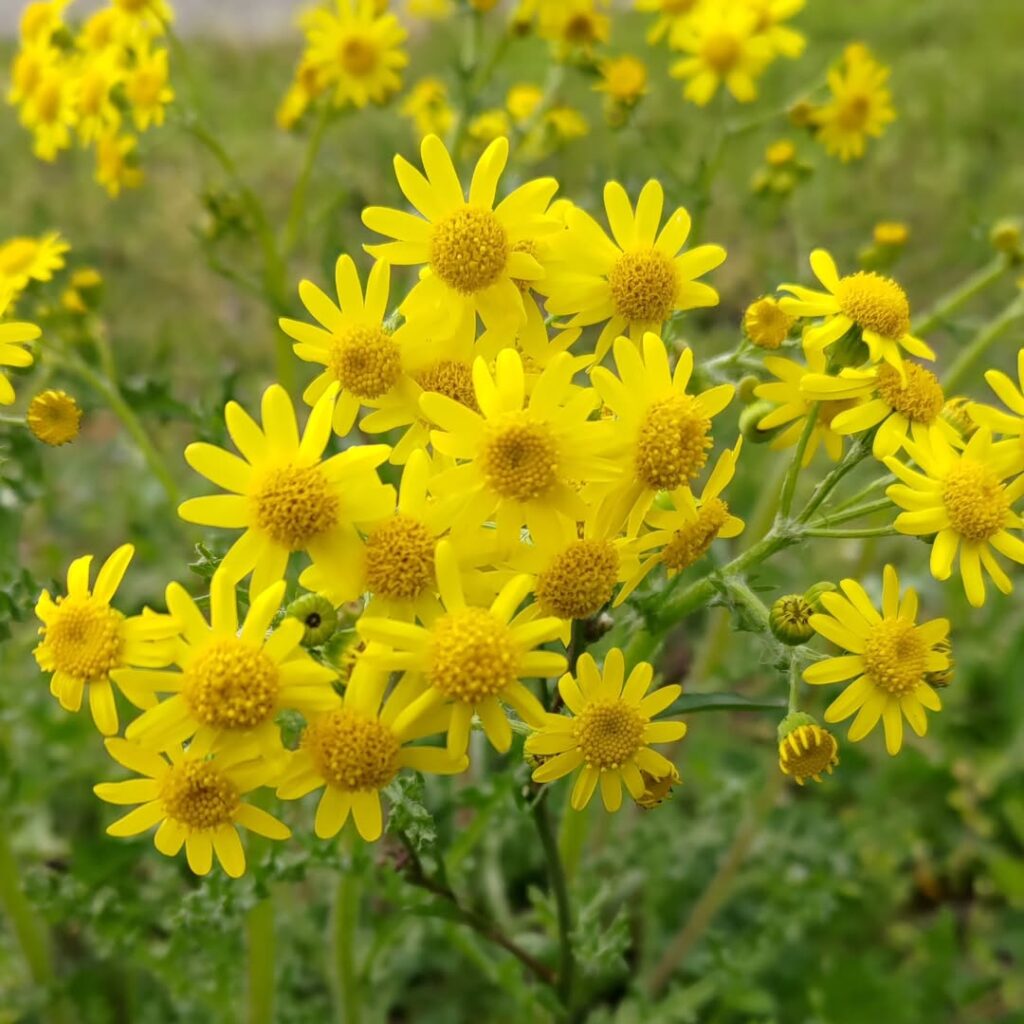
Senecio leucanthemifolius, also known as coastal ragwort, is an annual herb native to Mediterranean coastal regions, thriving in sandy and rocky habitats. It produces yellow flowers and has deeply lobed, silvery-green leaves, adapting well to salt-laden environments.
Senecio madagascariensis
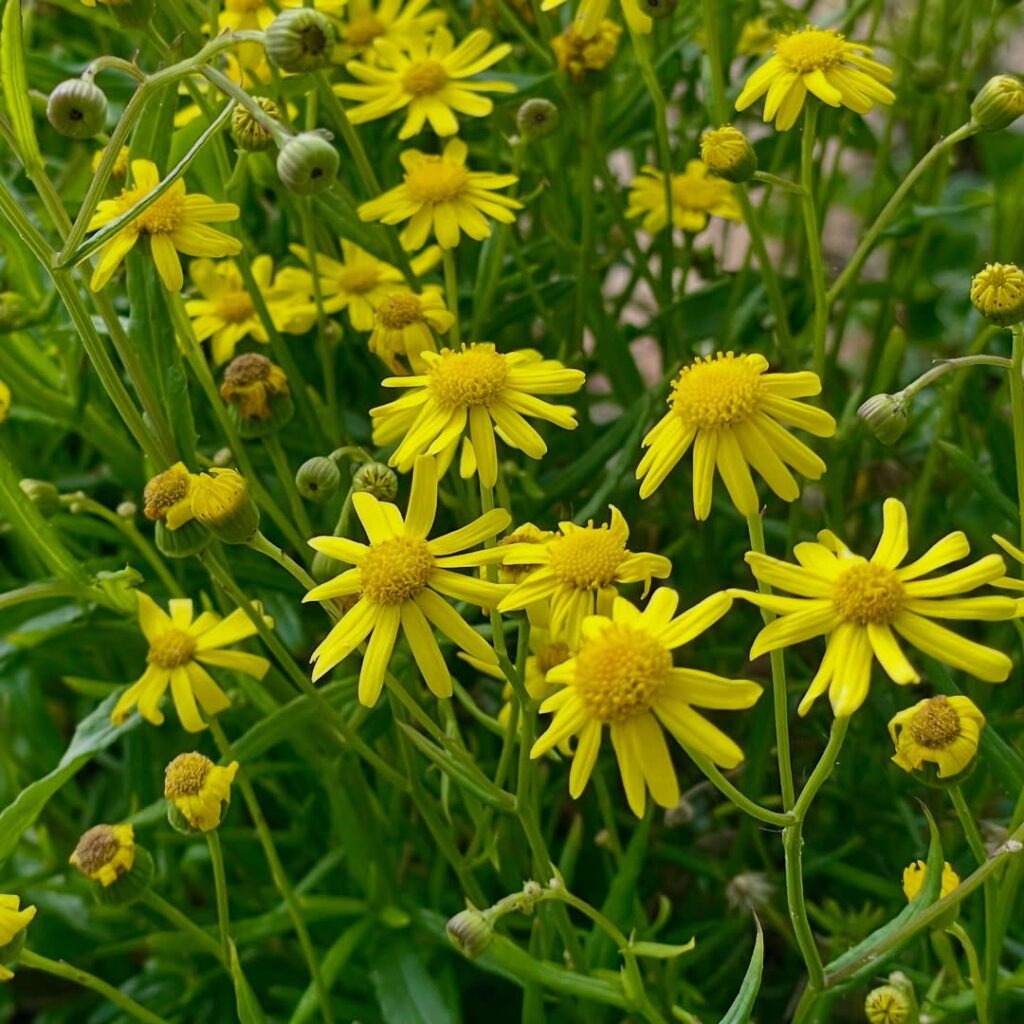
Senecio madagascariensis, also known as Madagascar ragwort or fireweed, is an annual or short-lived perennial herb native to Southern Africa. It grows 20–60 cm tall, with narrow-lanceolate leaves and bright yellow daisy-like flowers, thriving in disturbed habitats like pastures and roadsides.
Senecio sylvaticus

Senecio sylvaticus, also called Woodland Ragwort, is an annual herb native to Eurasia, growing in cool, wet areas. It reaches up to 80 cm tall, with deeply lobed, toothed leaves and yellow disc florets, often found along roadsides and disturbed habitats.
Senecio vernalis

Senecio vernalis, also known as Eastern groundsel, is an annual herb native to Europe and Western Asia, thriving in disturbed habitats like roadsides and fields. It produces bright yellow flowers and has deeply lobed, finely hairy leaves, often mistaken for similar Senecio species.
Senecio viscosus
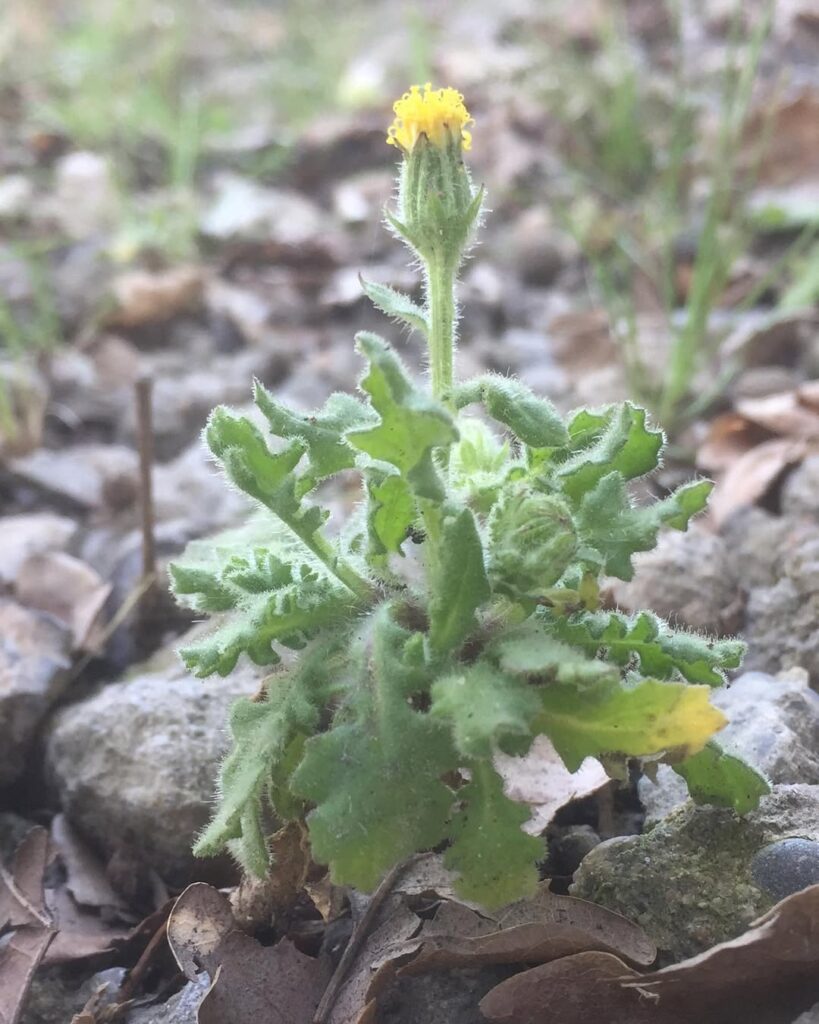
Senecio viscosus, also known as sticky ragwort, is an annual herb native to Europe and parts of Asia, growing up to 70 cm tall with sticky, deeply lobed leaves. It produces yellow ray florets and thrives in disturbed habitats like railway banks and coastal areas. The plant has a strong odor and contains pyrrolizidine alkaloids, which can be toxic to some animals.
Senecio vulgaris
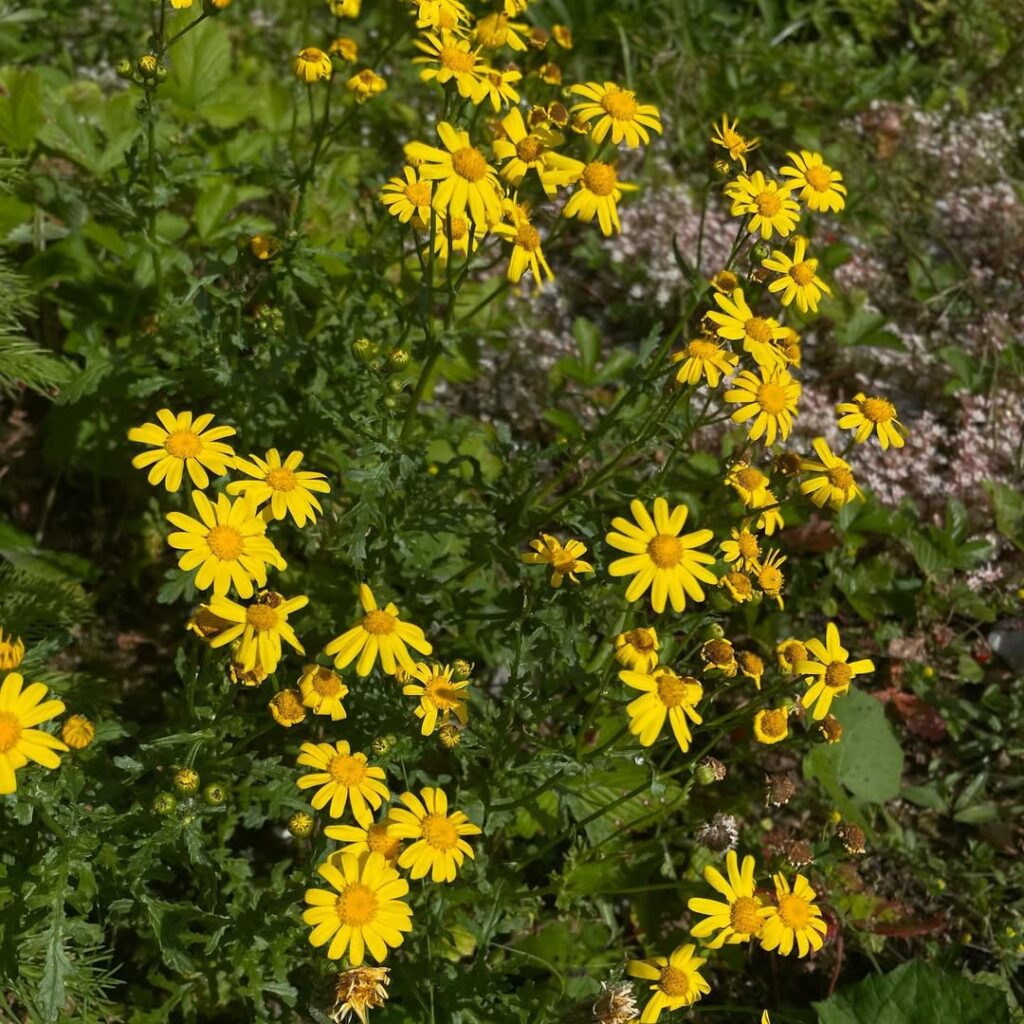
Senecio vulgaris, commonly known as common groundsel, is an annual herb native to Europe, North Africa, and temperate Asia. It grows up to 41 cm tall, with deeply lobed leaves and small yellow flowers that lack ray florets. The plant thrives in disturbed habitats and spreads rapidly through wind-dispersed seeds.
Flowering Perennial Senecios
Senecio abbreviatus (Short Ragwort)
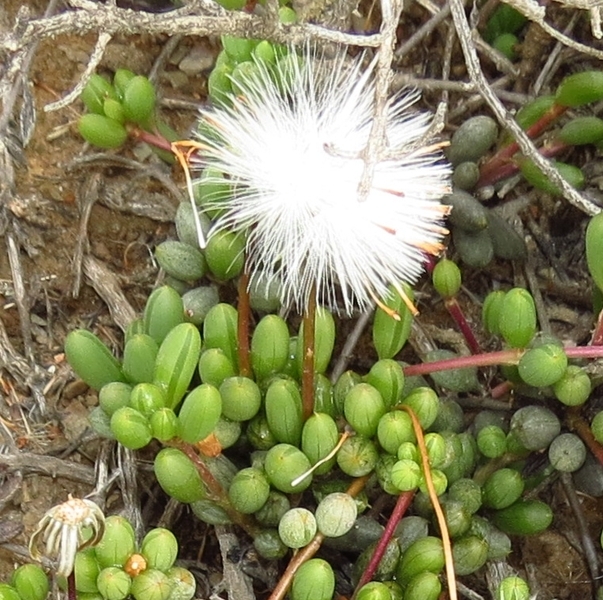
Senecio abbreviatus is a South African native known for its bright yellow, daisy-like flowers and hardy growth. It thrives in terrestrial habitats and is well-adapted to dry conditions. This perennial is valued for its resilience and ability to attract pollinators, making it a great addition to gardens with well-draining soil.
Senecio abruptus
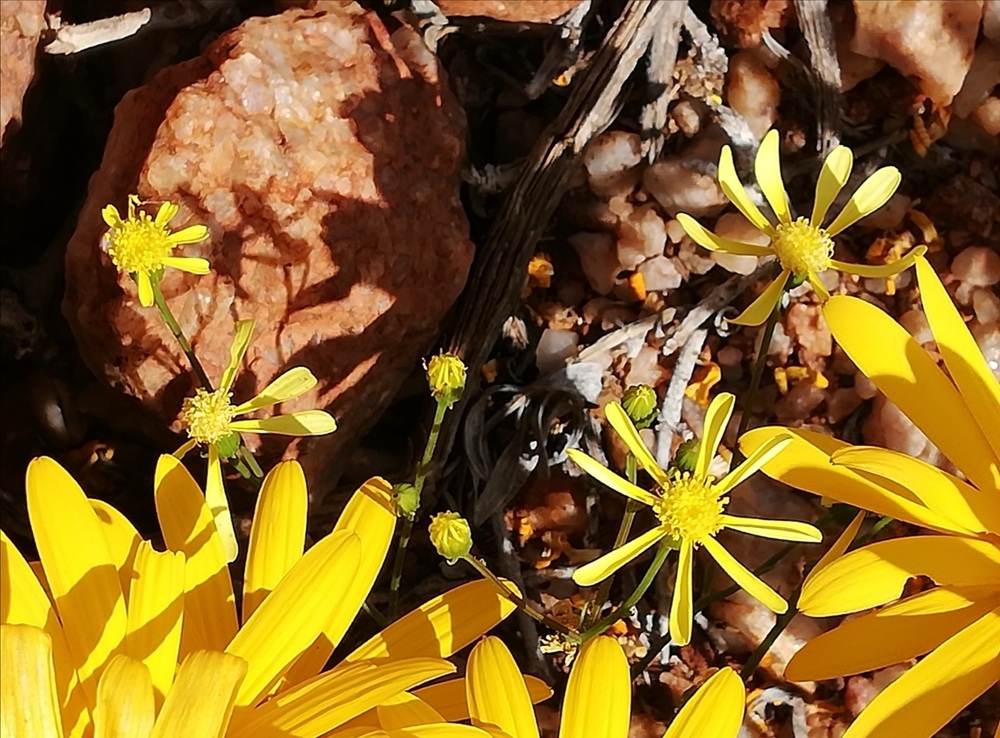
Senecio abruptus, also known as Yellow Starvation Ragwort, is a South African native that thrives on stony slopes. It grows up to 60 cm tall and features elongated, toothed leaves with slightly feathery margins. Between July and November, it produces small, bright yellow flowers in disc-shaped clusters, adding a cheerful touch to its rugged habitat.
Senecio achilleifolius
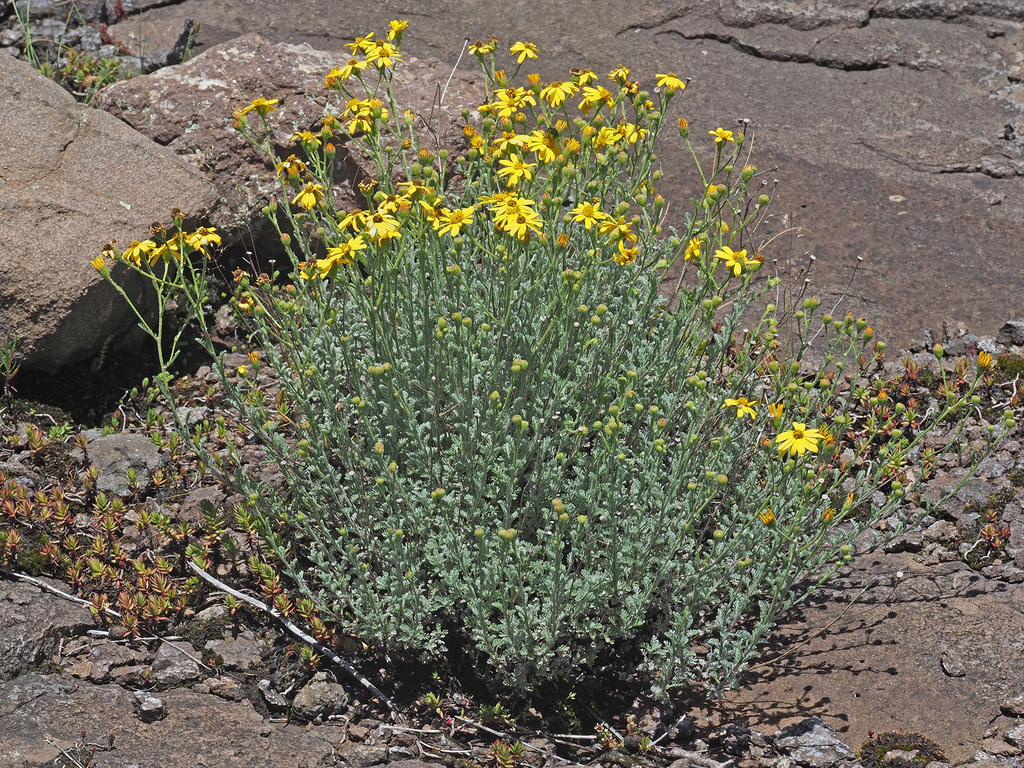
Senecio achilleifolius, also known as Achillea-leaved Groundsel, is a perennial herbaceous shrub native to South Africa. It features long, slender stems that can root at the nodes, along with deeply lobed, pinnatisect leaves that vary in shape depending on altitude. The bright yellow flowers bloom in dense clusters, creating a striking display from January to April.
Senecio acutifolius
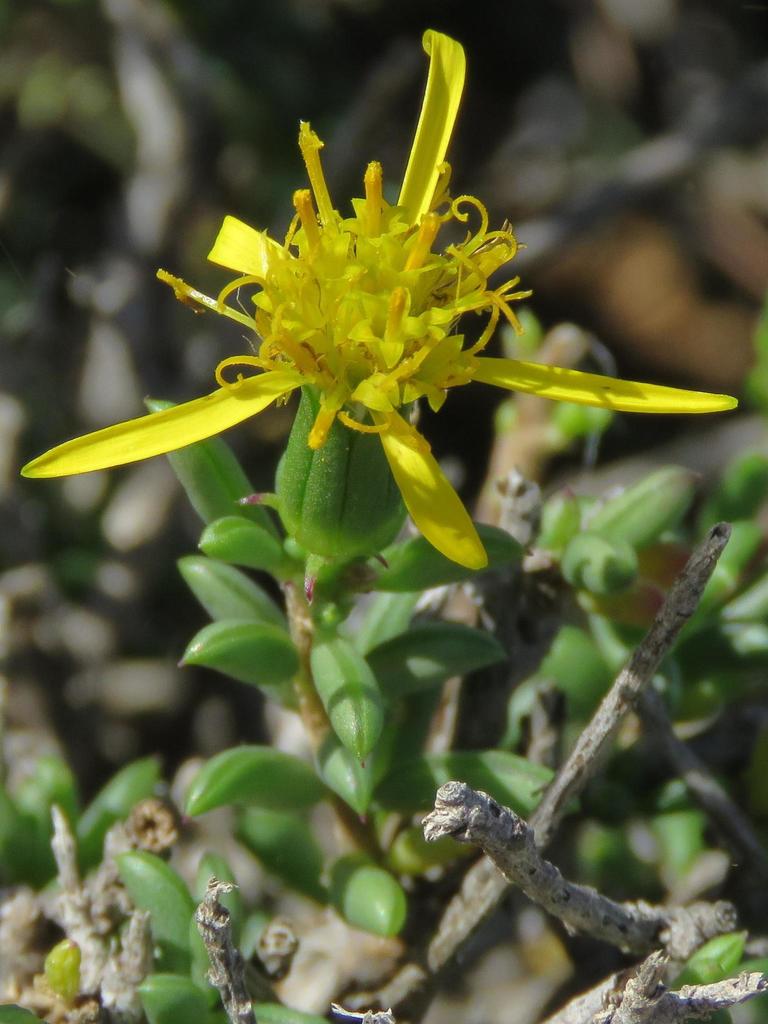
Senecio acutifolius is a South African perennial native to the Cape Provinces. It thrives in Karoo habitats, growing on stony hills and flats. This species produces bright yellow flowers and is well-adapted to dry conditions, though overgrazing has led to some population declines. Despite this, it remains widespread and resilient in its natural range.
Senecio acutipinnus
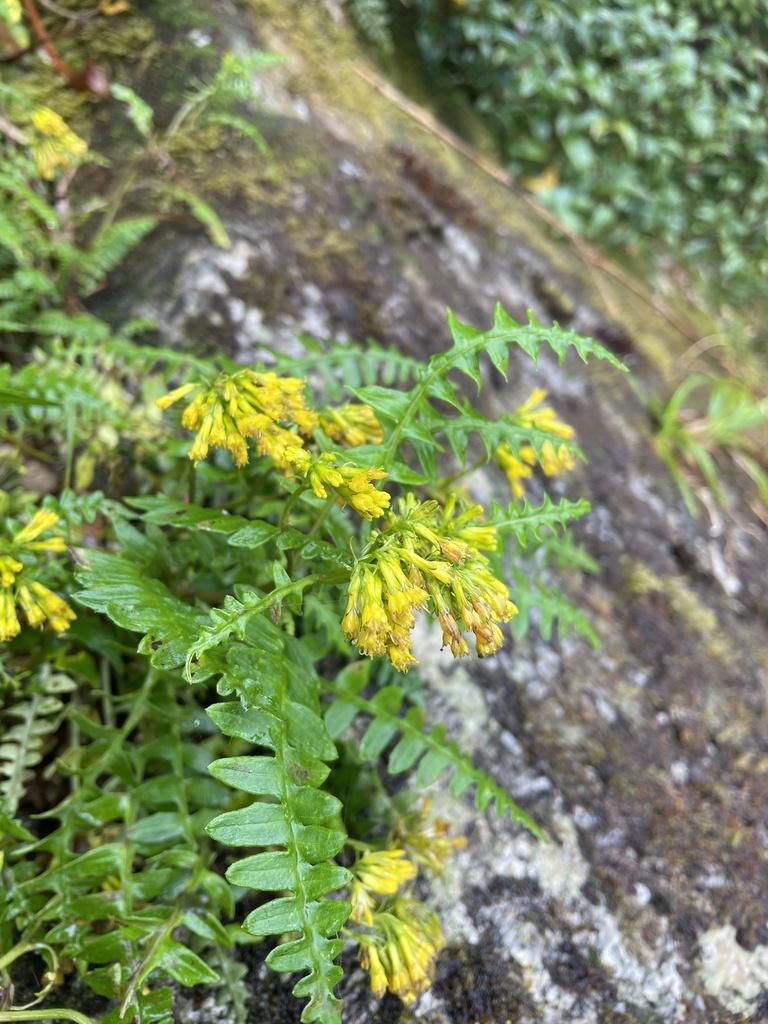
Senecio acutipinnus is a rare, creeping perennial native to China (Yunnan, W. Guizhou) and northern Vietnam. It thrives in temperate climates and features rhizomatous growth, meaning it spreads through underground stems. Its leaves are deeply lobed, resembling those of Jacobaea graciliflora, and it produces bright yellow flowers in dense clusters.
Senecio adenophyllus
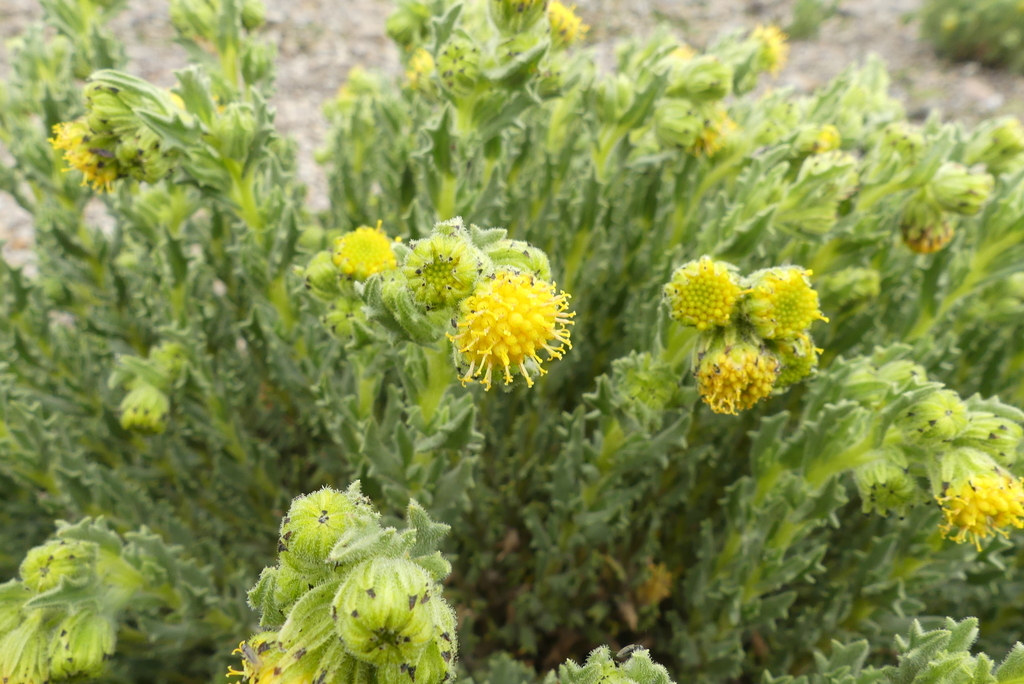
Senecio adenophyllus is a much-branched shrub native to Peru, northern Chile, Bolivia, and northwest Argentina. It grows in rock crevices at high elevations, often reaching up to the snow line. This hardy perennial features erect, aromatic branches and bright yellow flowers, making it well-adapted to extreme conditions. Locally, it has been used for medicinal purposes, including traditional remedies for broken limbs.
Senecio adenotrichius
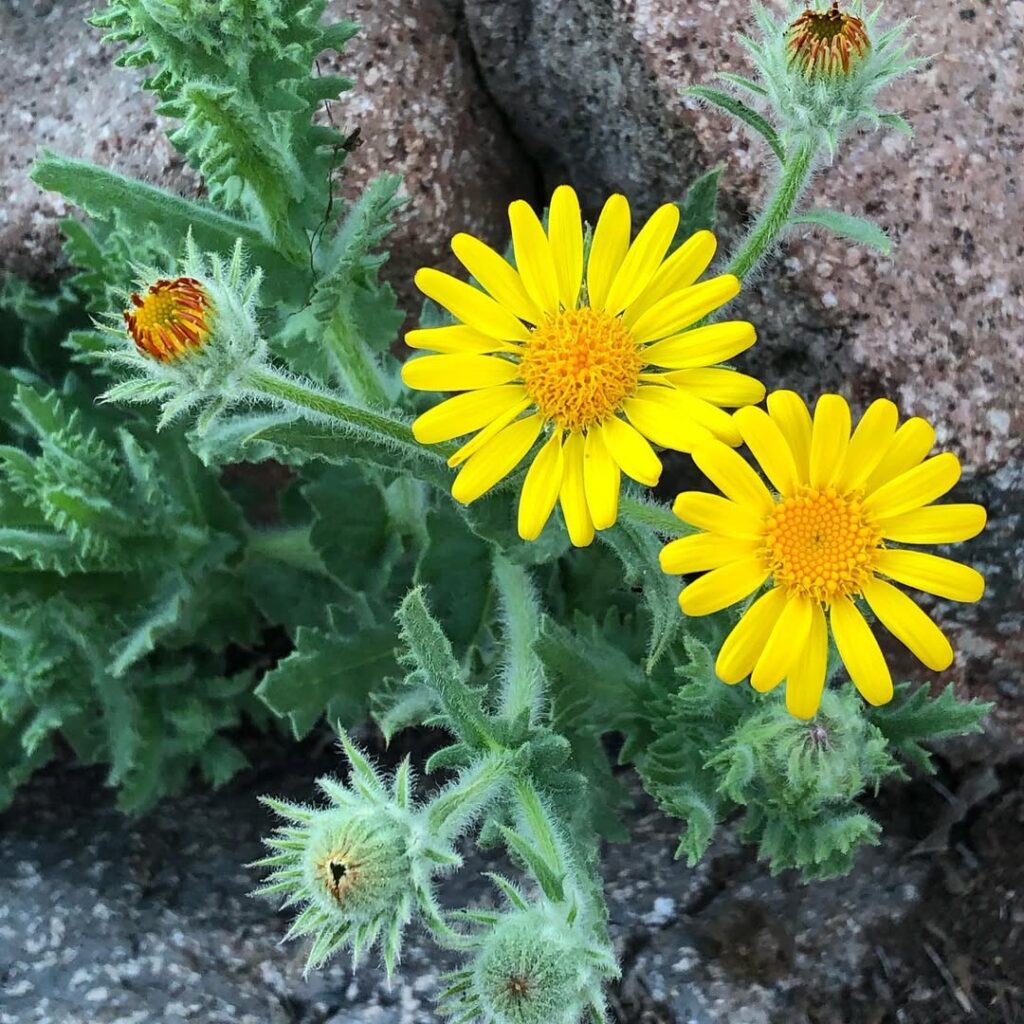
Senecio adenotrichius is a Chilean native that thrives in disturbed land and is considered invasive in the United States. It belongs to the Asteraceae family and produces bright yellow flowers typical of many Senecio species. First described in 1838, it has been taxonomically linked to several synonyms, including Adenotrichia amplexicaulis and Heterolepis conyzoides.
Senecio adglacialis

Senecio adglacialis, also known as Glacial Ragwort, is native to Colombia and thrives in alpine environments. It is well-adapted to cold, high-altitude regions, often growing in rocky, dry habitats. This perennial produces bright yellow flowers and is valued for its resilience in extreme conditions.
Senecio adnatus
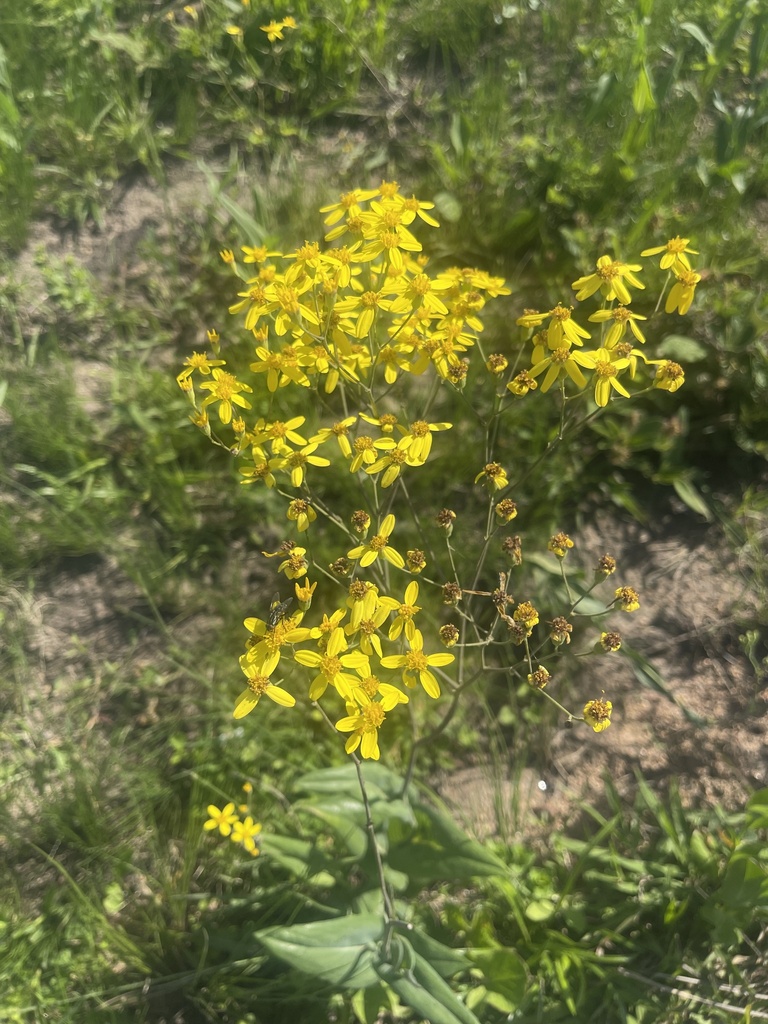
Senecio adnatus, also known as Adnate Ragwort, is a perennial herb native to South Africa. It grows up to 1 meter tall and thrives in grasslands, open woodlands, and disturbed areas. Its alternate, pinnately divided leaves give it a distinctive appearance, while its yellow, daisy-like flowers bloom in clusters. This species is drought-tolerant and prefers full sun with well-drained soil.
Senecio aetfatensis
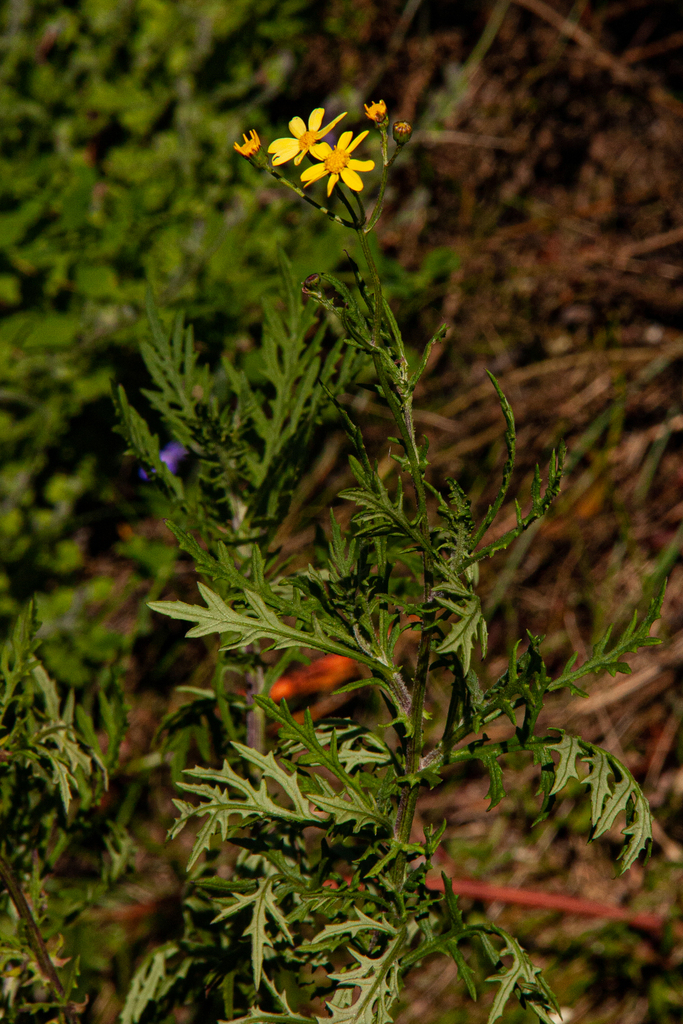
Senecio aetfatensis is a shrubby herb with deeply lobed, finely serrated leaves that create a feathery, textured look. It produces bright yellow, daisy-like flowers arranged in loose clusters, standing out against its rugged montane habitat.
Senecio affinis

Senecio affinis has slender, deeply lobed leaves that give it a delicate, wispy appearance. Its bright yellow, daisy-like flowers bloom in small clusters, standing out against its fine, feathery foliage.
Senecio agapetes
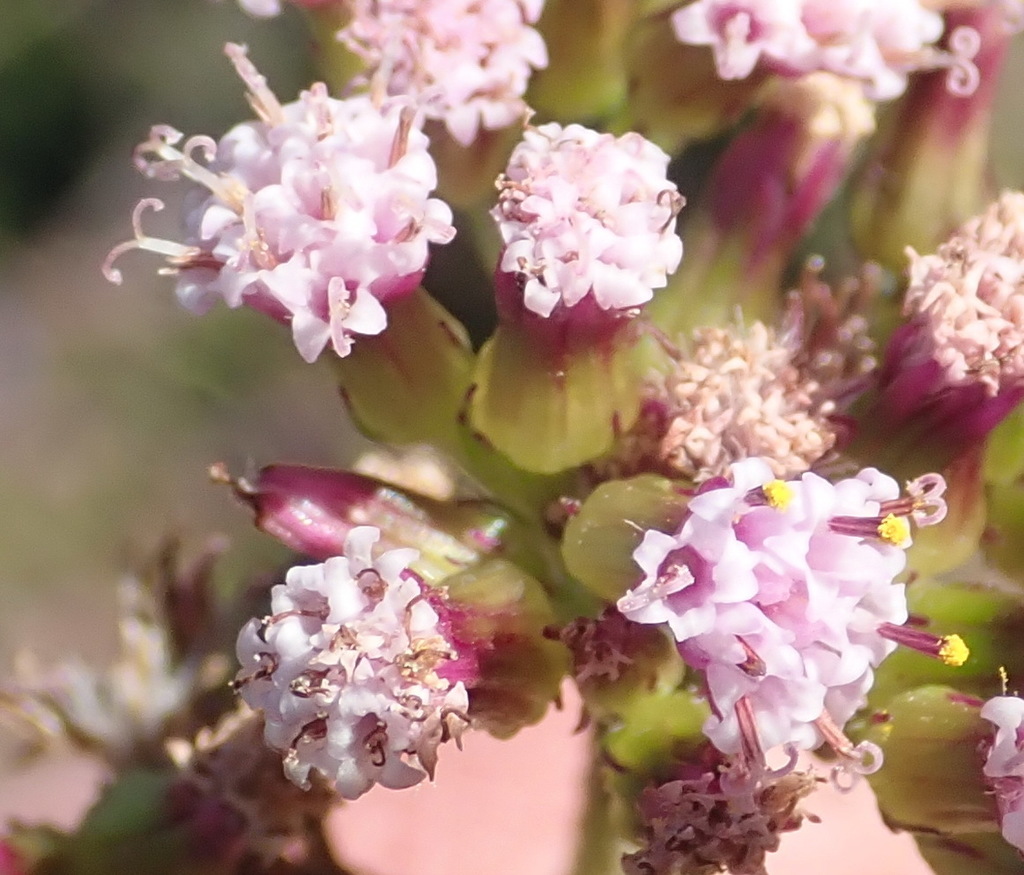
Senecio agapetes has slender, elongated leaves with finely serrated edges, giving it a delicate, feathery look. Its bright yellow flowers bloom in loose clusters, standing out against its airy foliage.
Senecio albifolius
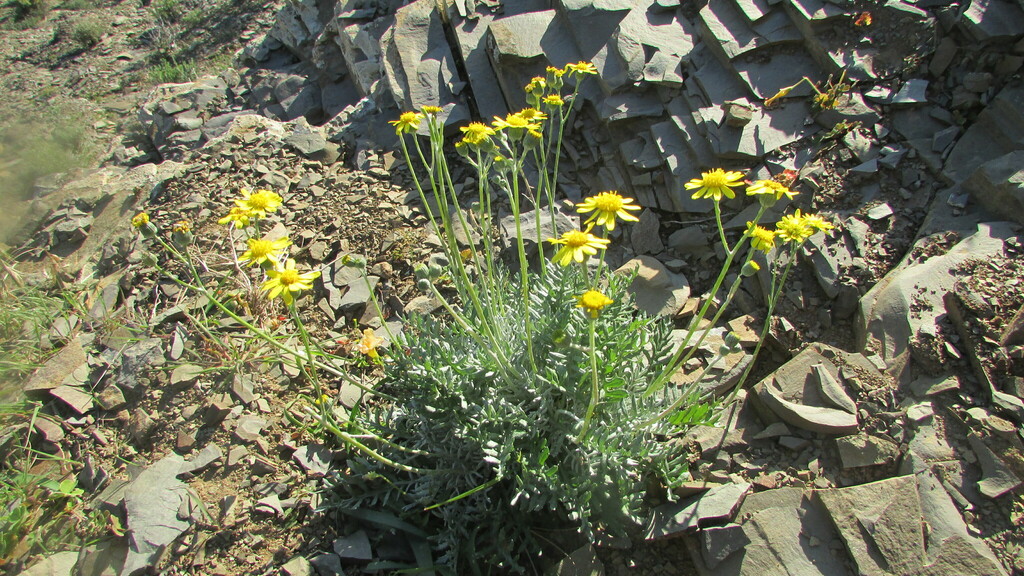
Senecio albifolius has elongated, narrow leaves with a soft, silvery-white hue, giving it a delicate, frosted look. Its bright yellow flowers bloom in loose clusters, creating a striking contrast against its pale foliage.
Senecio alloeophyllus
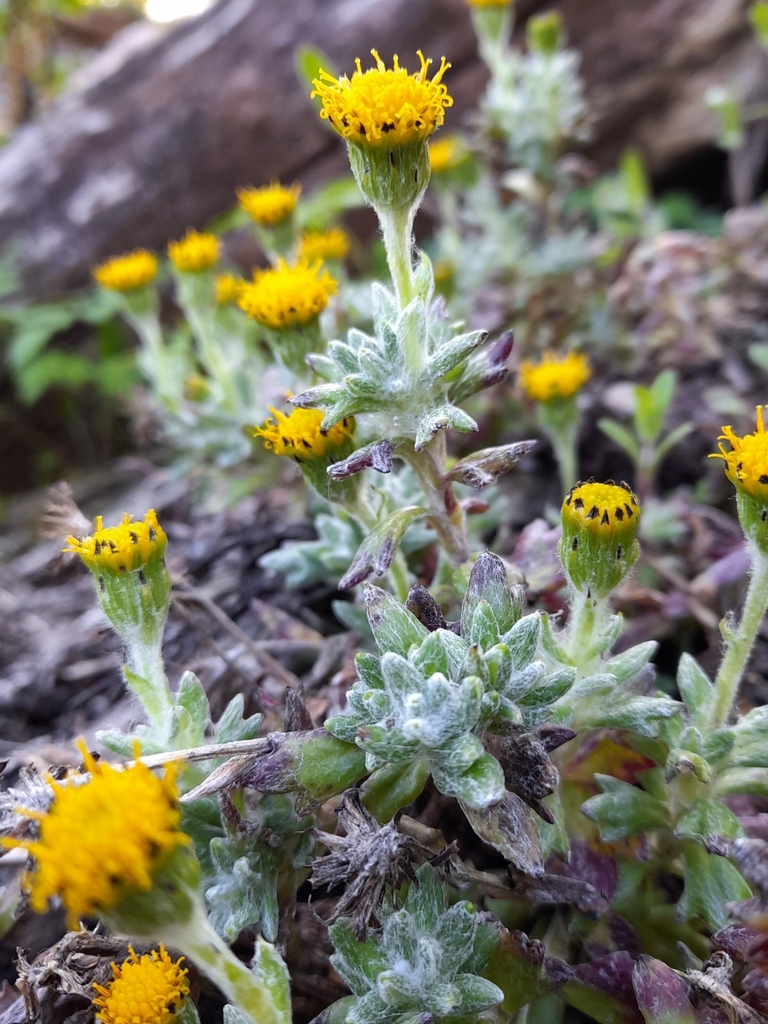
Senecio alloeophyllus has soft, fuzzy leaves covered in fine hairs, giving it a silvery-green appearance. Its bright yellow flowers bloom in loose clusters, providing a striking contrast against its textured foliage.
Senecio alpinus
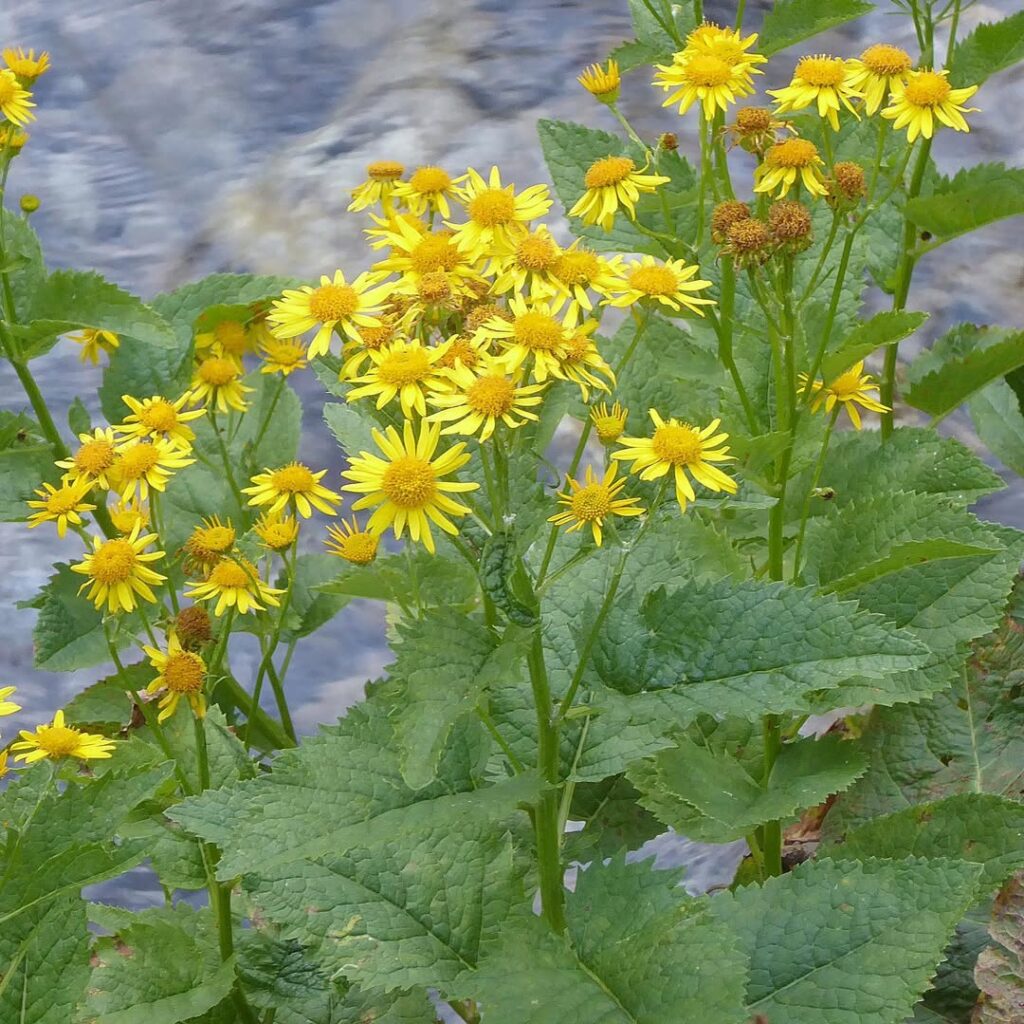
Senecio alpinus, also known as Alpine Ragwort, is a perennial herb native to mountainous regions of Europe. It grows 30–100 cm tall, with heart-shaped, serrated leaves and yellow flowers blooming in summer, thriving in moist alpine meadows.
Senecio altissimus
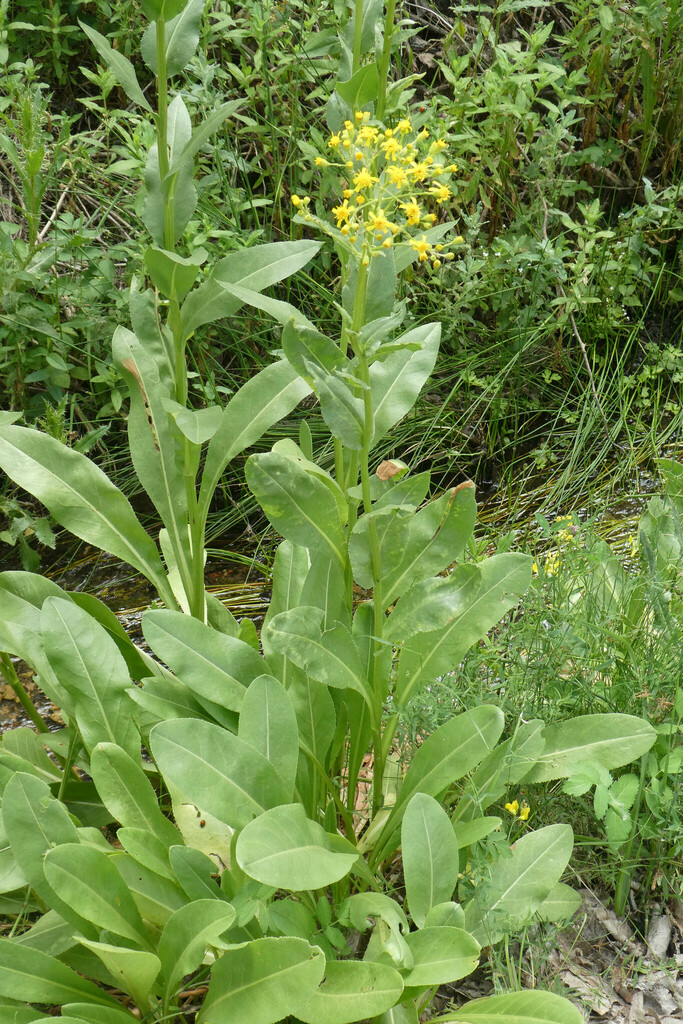
Senecio altissimus, commonly known as Tall Ragwort, is a perennial herbaceous plant native to Spain, Italy, and Morocco. It features deeply lobed leaves and bright yellow, daisy-like flowers, thriving in meadows and grasslands.
Senecio amplectens
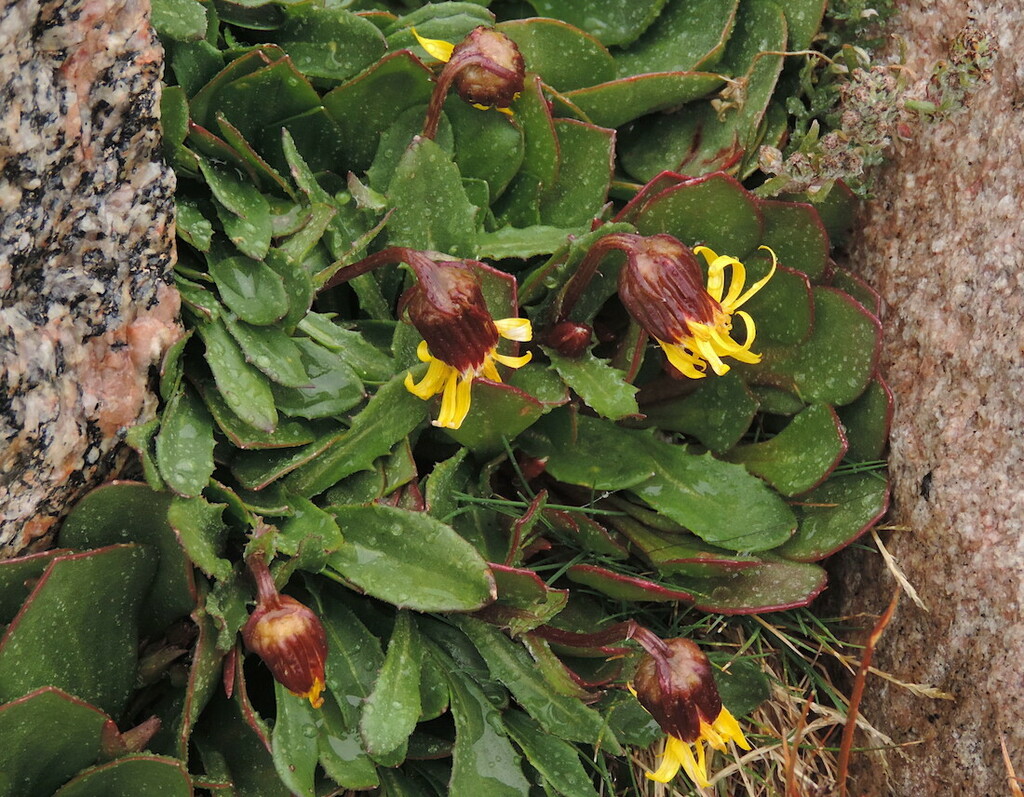
Senecio amplectens, commonly known as Alpine Ragwort, is a perennial herbaceous plant native to North American alpine regions, particularly the Rocky Mountains. It features deeply lobed leaves and bright yellow, daisy-like flowers, which attract pollinators like bees and butterflies.
Senecio angulatus
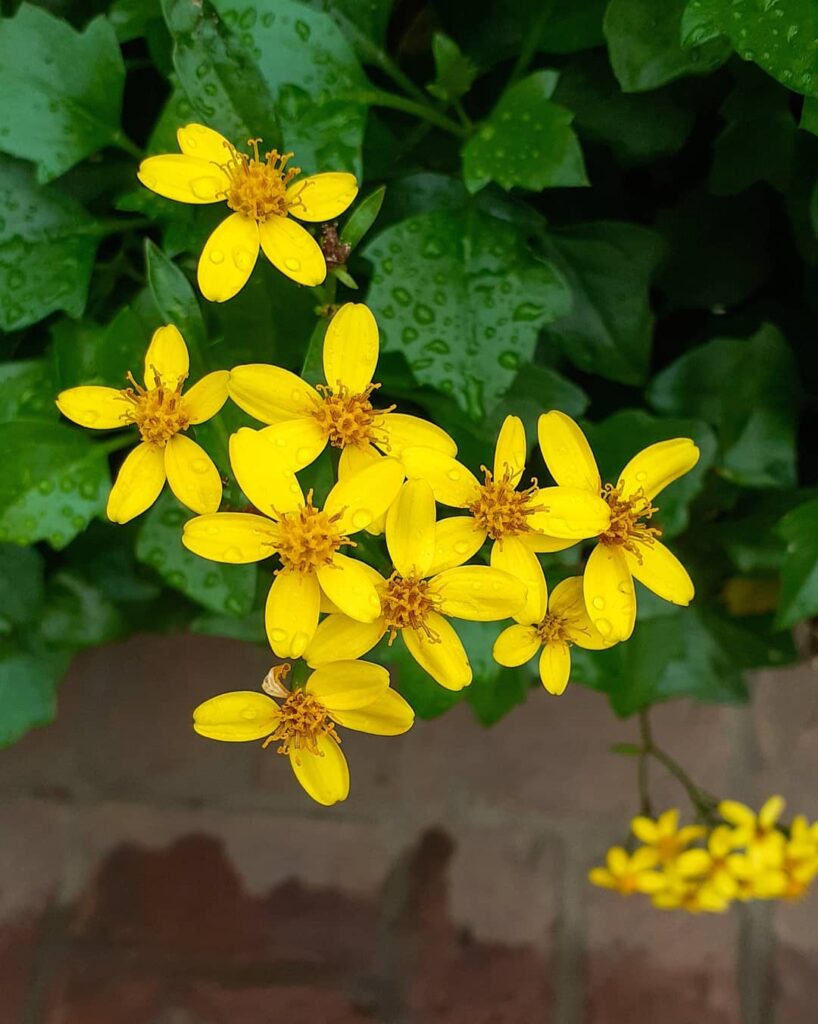
Senecio angulatus, also known as Cape ivy or creeping groundsel, is a fast-growing, scrambling succulent with glossy, fleshy, diamond-shaped leaves and bright yellow, honey-scented flowers. It can grow as a dense tangled shrub or a climber, reaching up to 10 meters high, making it an aggressive ornamental that can become invasive.
Senecio antandroi
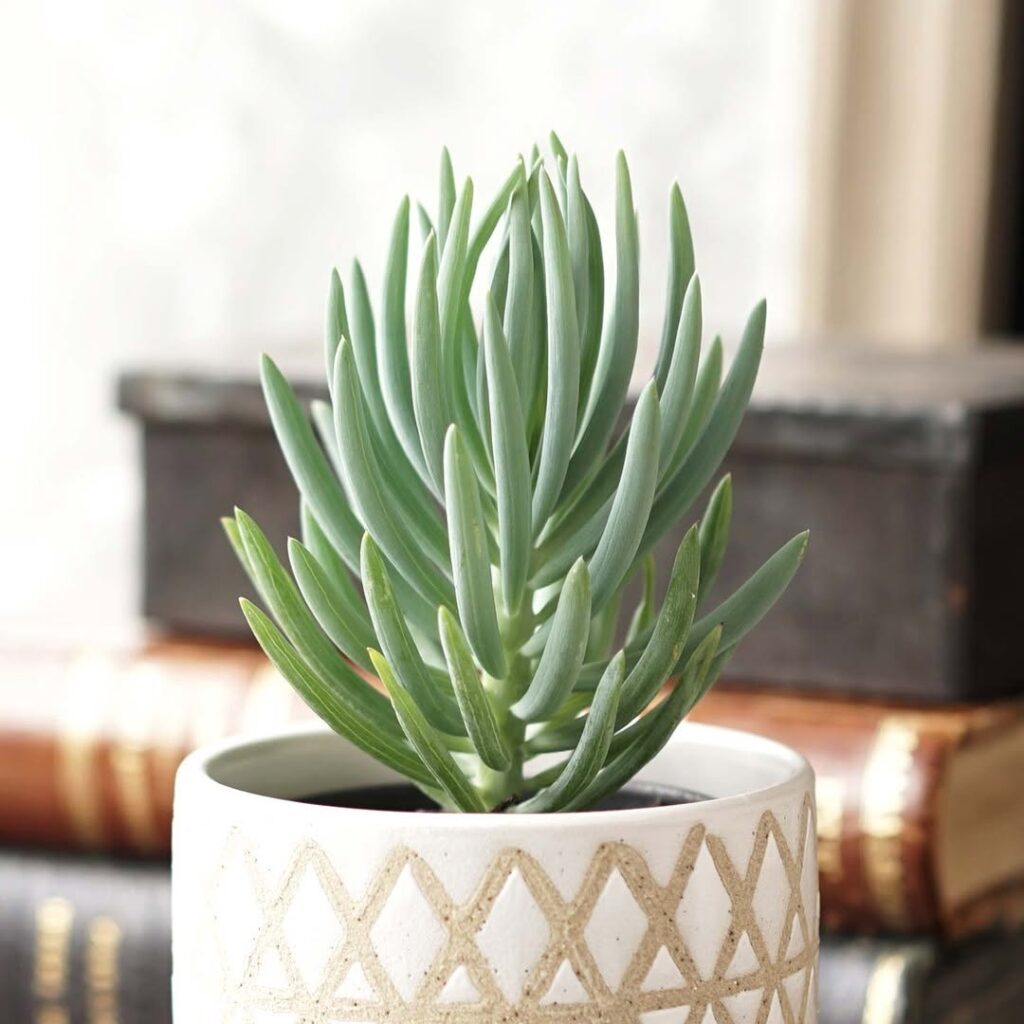
Senecio antandroi, also known as Antandro’s Groundsel, is a perennial herb native to Madagascar, thriving in moist soils and open woodlands. It features lanceolate leaves arranged oppositely along a single stem and produces yellow flowers with five petals, making it a striking addition to gardens.
Senecio bahioides
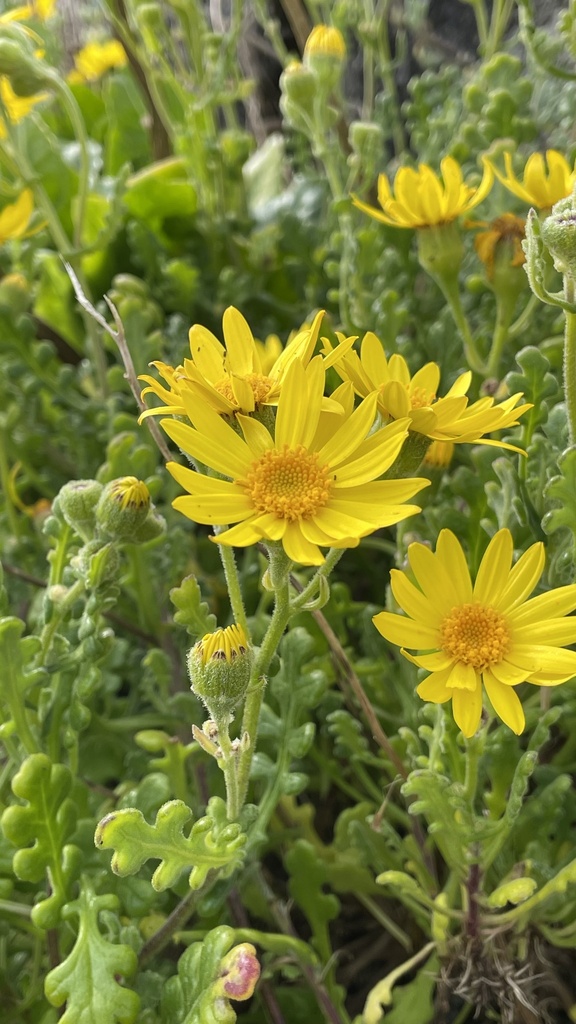
Senecio bahioides is a flowering plant species in the Asteraceae family, native to Chile. It features deeply lobed leaves and small yellow flowers, thriving in disturbed areas like roadsides and agricultural fields.
Senecio brasiliensis
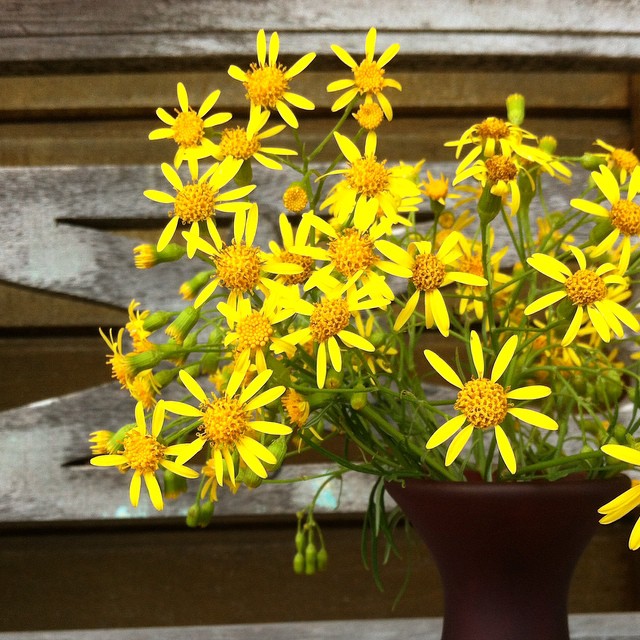
Senecio brasiliensis is a perennial herb native to South America, growing up to 2 meters tall with deeply lobed, pinnate leaves that have a whitish underside. It produces dense clusters of bright yellow flowers, thriving in disturbed landscapes like pasturelands and croplands.
Senecio cerberoanus
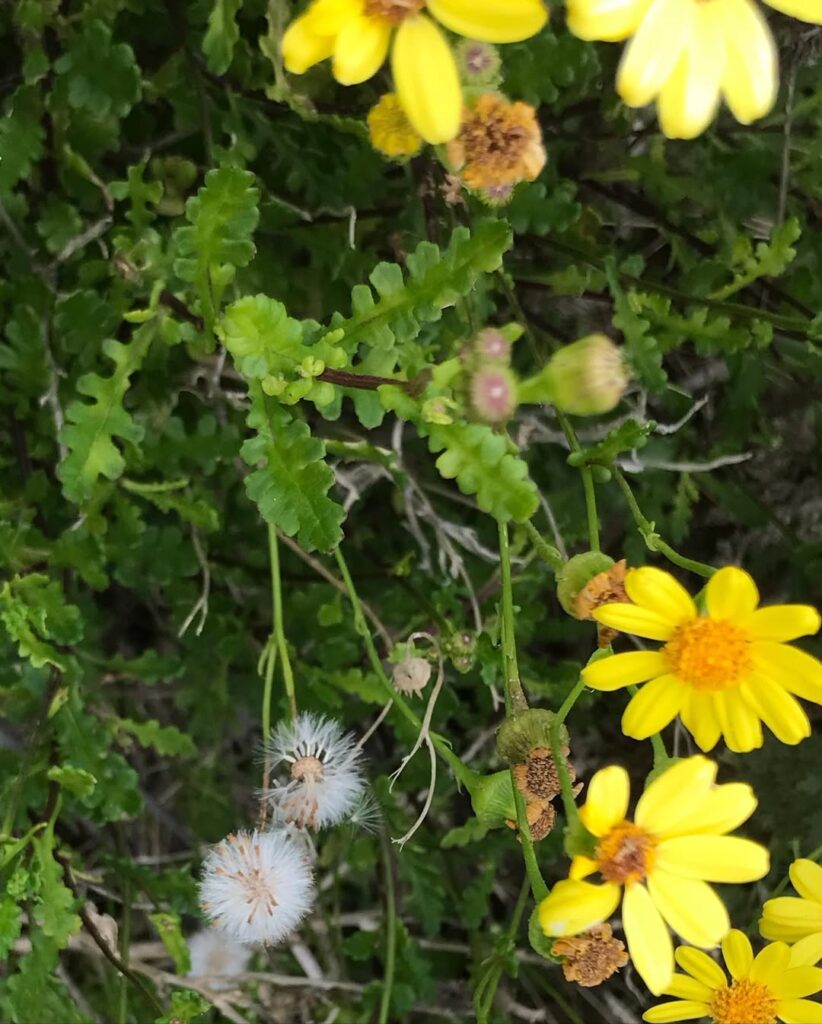
Senecio cerberoanus is a species of Senecio native to Chile, belonging to the Asteraceae family. It features small yellow flowers and thrives in dry, rocky habitats, making it well-adapted to arid conditions.
Senecio chilensis
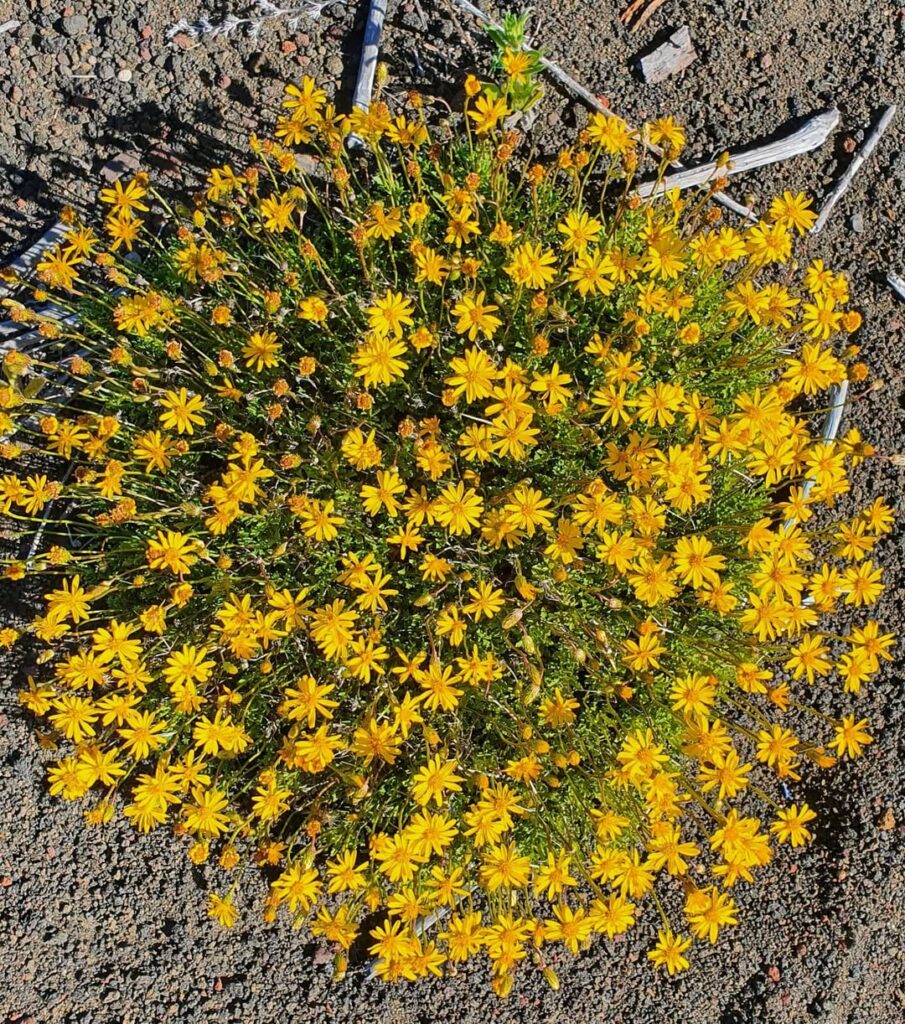
Senecio chilensis is a species in the Asteraceae family, native to Chile and Argentina, particularly in central and southern regions. It features yellow flowers and thrives in dry, rocky habitats, making it well-adapted to arid conditions.
Senecio confusus
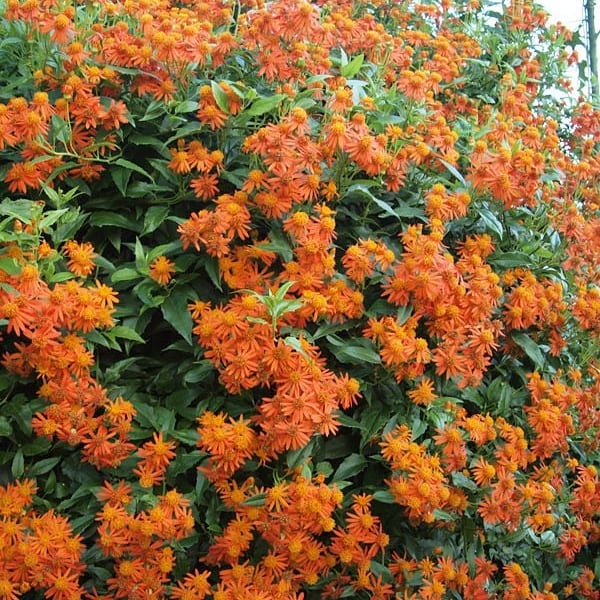
Senecio confusus, now classified as Pseudogynoxys chenopodioides, is a fast-growing vine with arrowhead-shaped leaves and bright orange-red flowers. Native to Mexico and Central America, it is popular for trellises and hanging baskets.
Senecio cristobalensis
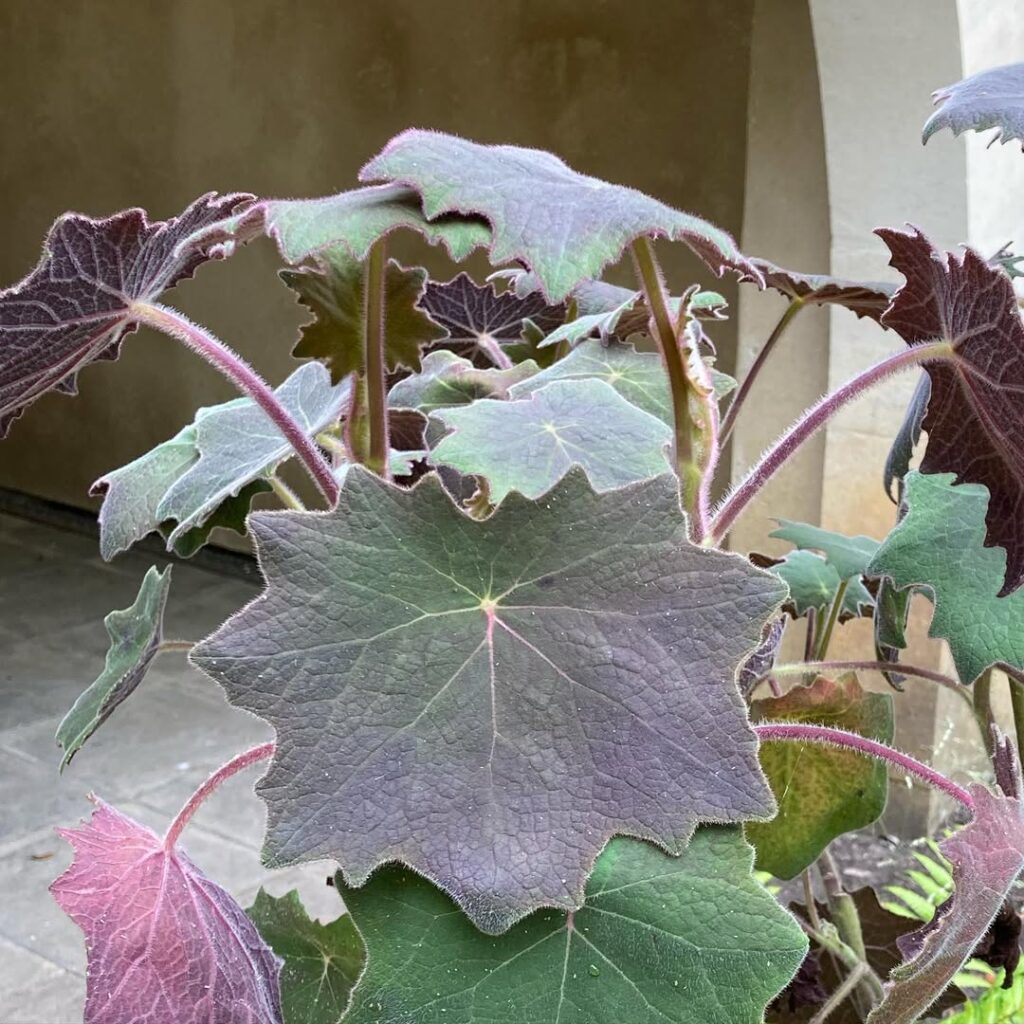
This lush, leafy Senecio features large velvety foliage and clusters of bold yellow flowers. It’s fast-growing and well-suited for garden borders or as a feature plant. It enjoys well-drained, nutrient-rich soil and thrives in partial sun.
Senecio flaccidus
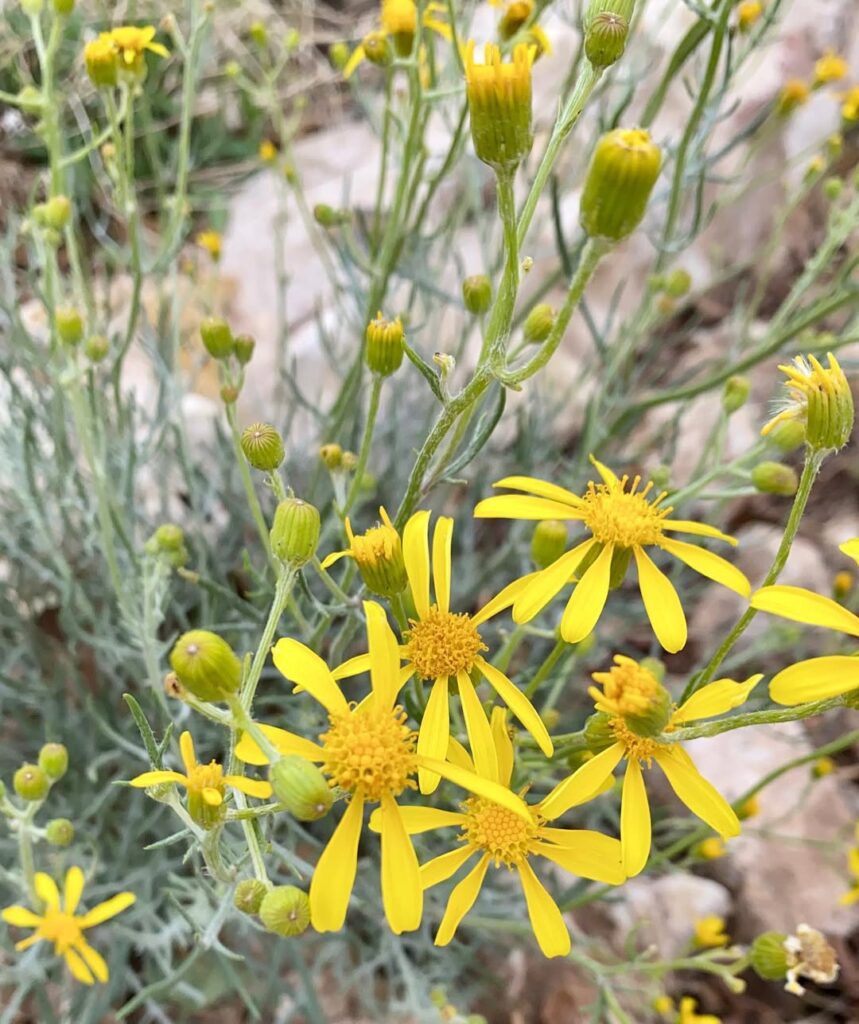
Senecio flaccidus, also known as threadleaf ragwort, is a bushy perennial shrub native to central and southwestern North America, thriving in gravelly and dry areas. It grows up to 1.37 meters tall, with deeply pinnate, gray-green leaves and bright yellow flowers that bloom from April to September.
Senecio fistulosus
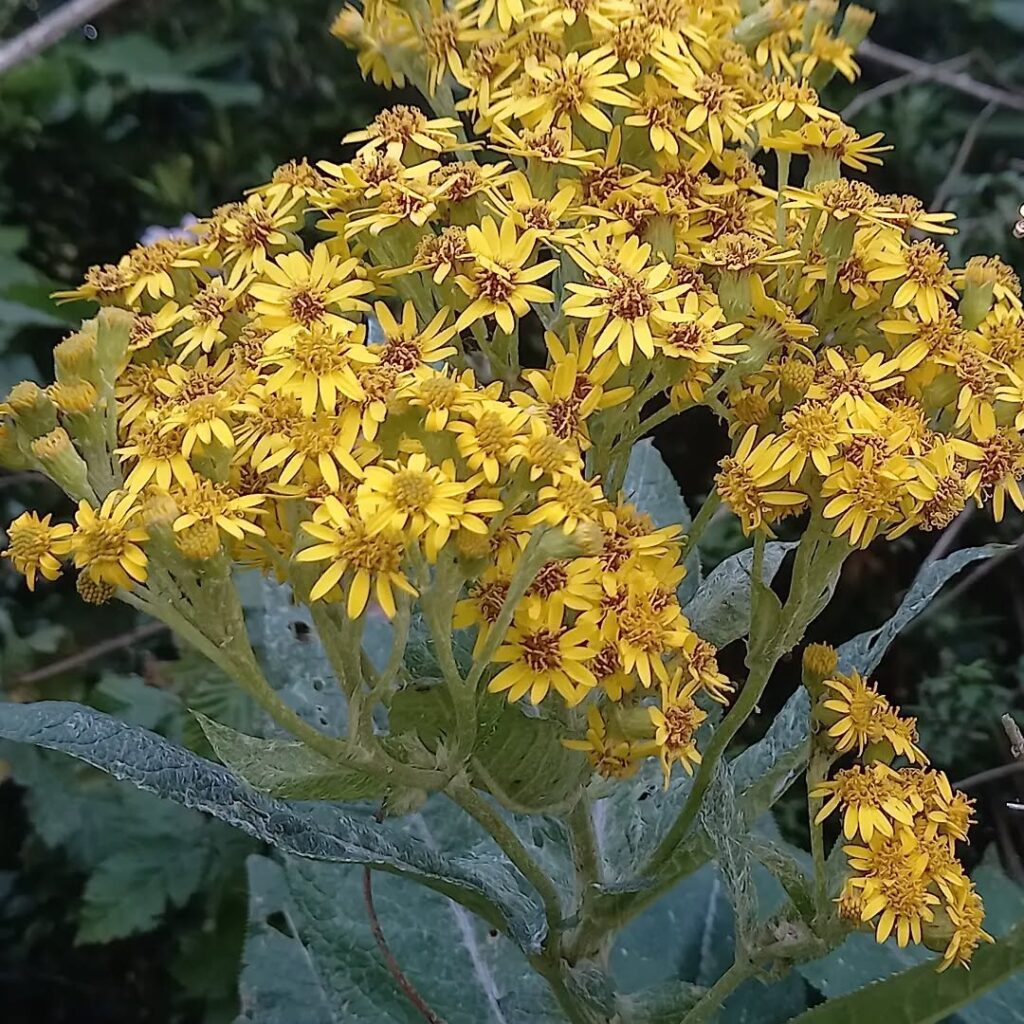
Senecio fistulosus is a perennial herb native to Chile, Argentina, and Bolivia, thriving in mountainous and coastal regions. It features hollow, cylindrical stems and yellow daisy-like flowers, adapting well to dry, rocky habitats.
Senecio fulgens
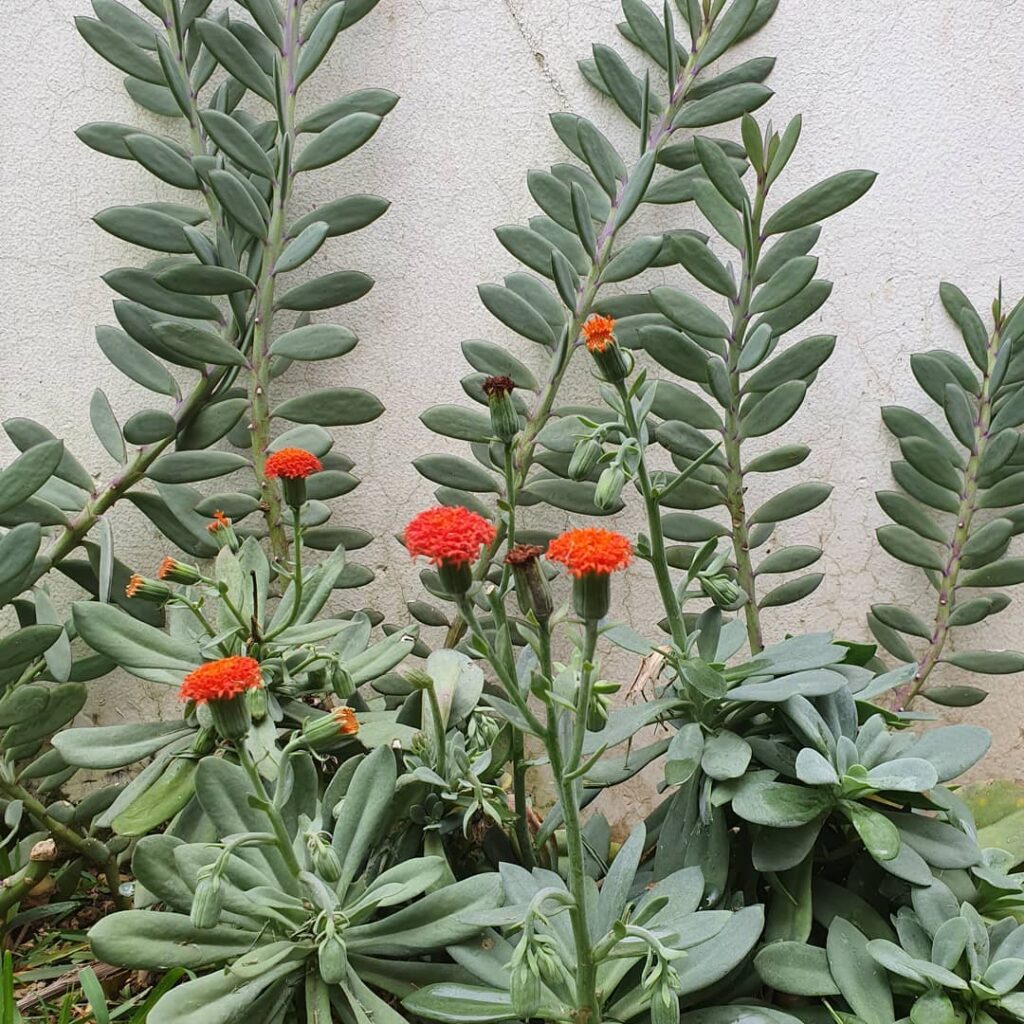
A striking flowering perennial, Senecio fulgens produces bright red flowers that add bold color to gardens. Its bushy growth makes it an excellent ornamental plant, especially in warmer climates. It prefers well-drained soil and occasional watering.
Senecio glastifolius
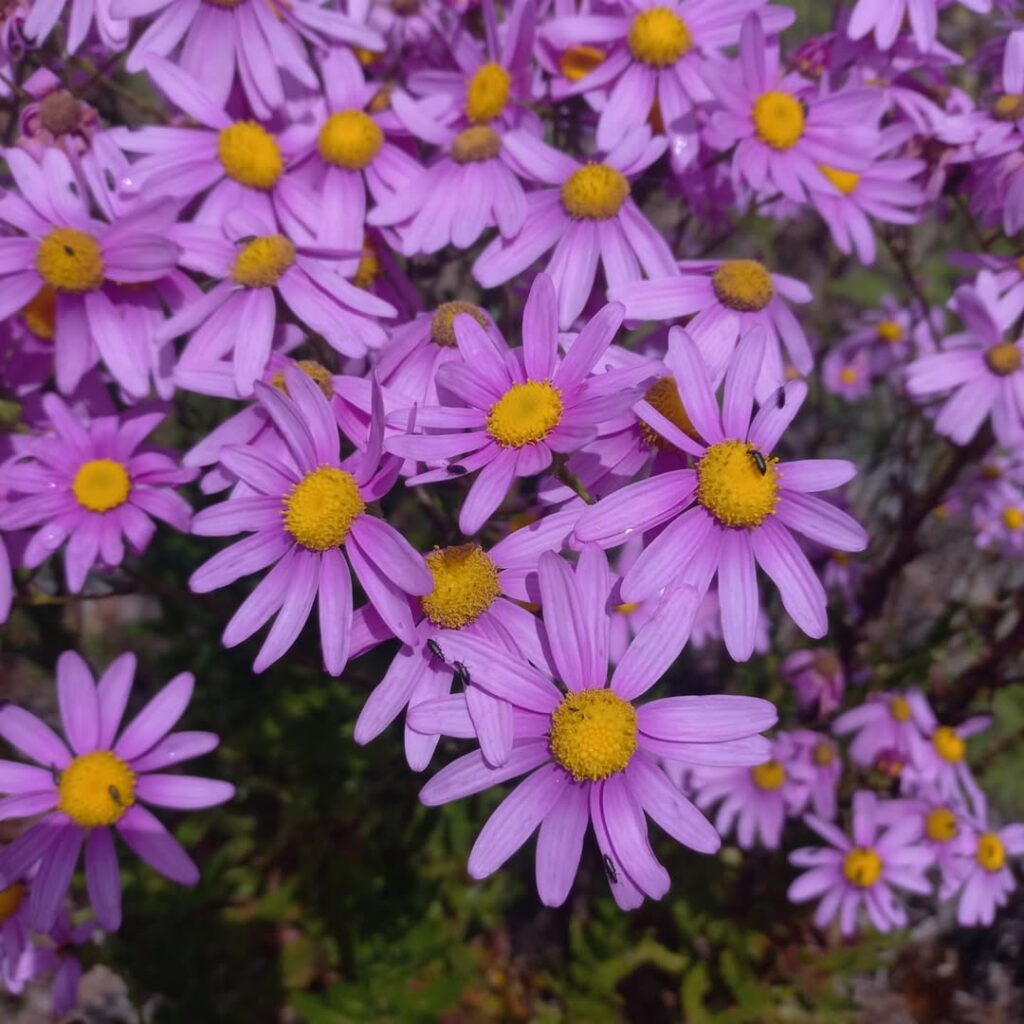
Senecio glastifolius, also known as pink ragwort or holly-leaved senecio, is a tall perennial herb native to South Africa, often cultivated for its mauve-pink flowers with yellow centers. It thrives in coastal Mediterranean climates, colonizing disturbed soils, and has become naturalized in parts of New Zealand and Australia.
Senecio hercynicus

Senecio hercynicus, or Hercynian Groundsel, is a perennial herb found in European grasslands and scrublands. It forms a basal rosette of elongated, toothed leaves and produces small yellow flowers in late spring to early summer.
Senecio inaequidens
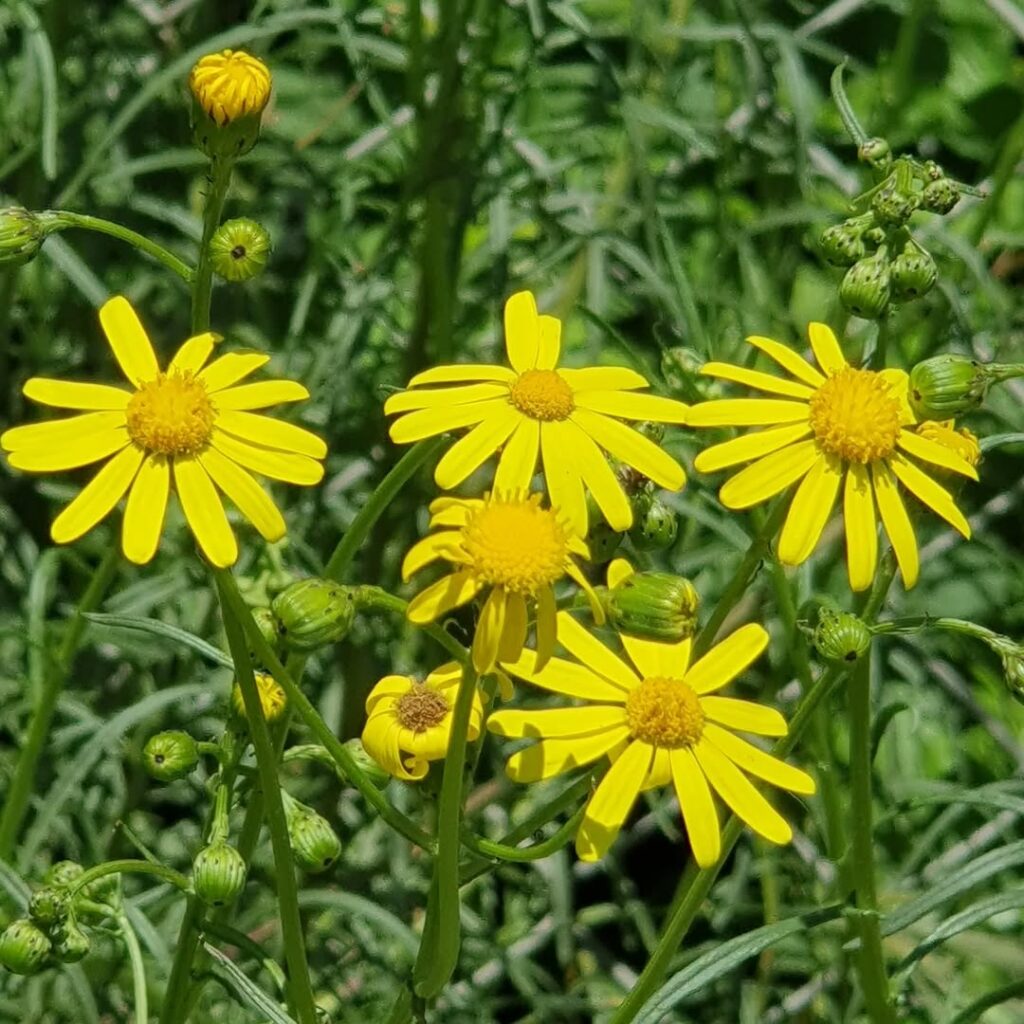
Senecio inaequidens, also known as narrow-leaved ragwort, is a perennial herb native to Southern Africa, thriving in disturbed habitats like riverbanks, rocky slopes, and roadsides. It produces bright yellow flowers and has linear, irregularly toothed leaves, making it a fast-spreading invasive species in Europe and other regions.
Senecio integerrimus
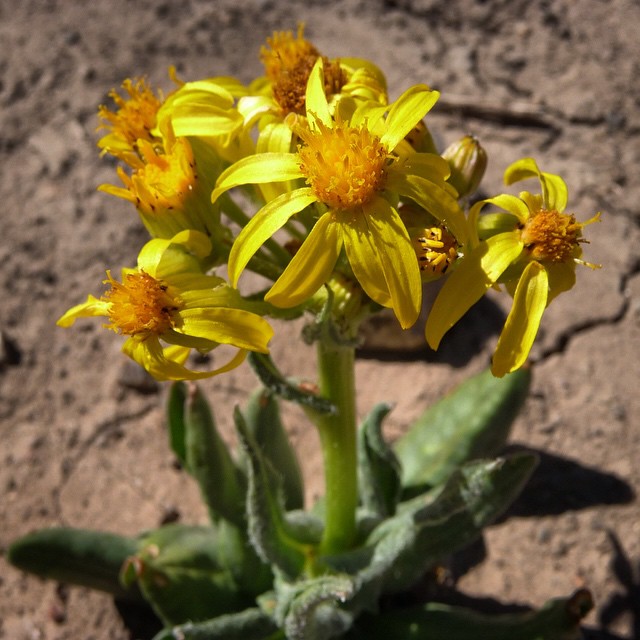
Senecio integerrimus, also known as lambstongue ragwort, is a biennial or perennial herb native to western and central North America, thriving in grasslands and forests. It grows 20–70 cm tall, with linear to lance-shaped basal leaves and yellow flowers, often forming compact clusters.
Senecio jacobaea
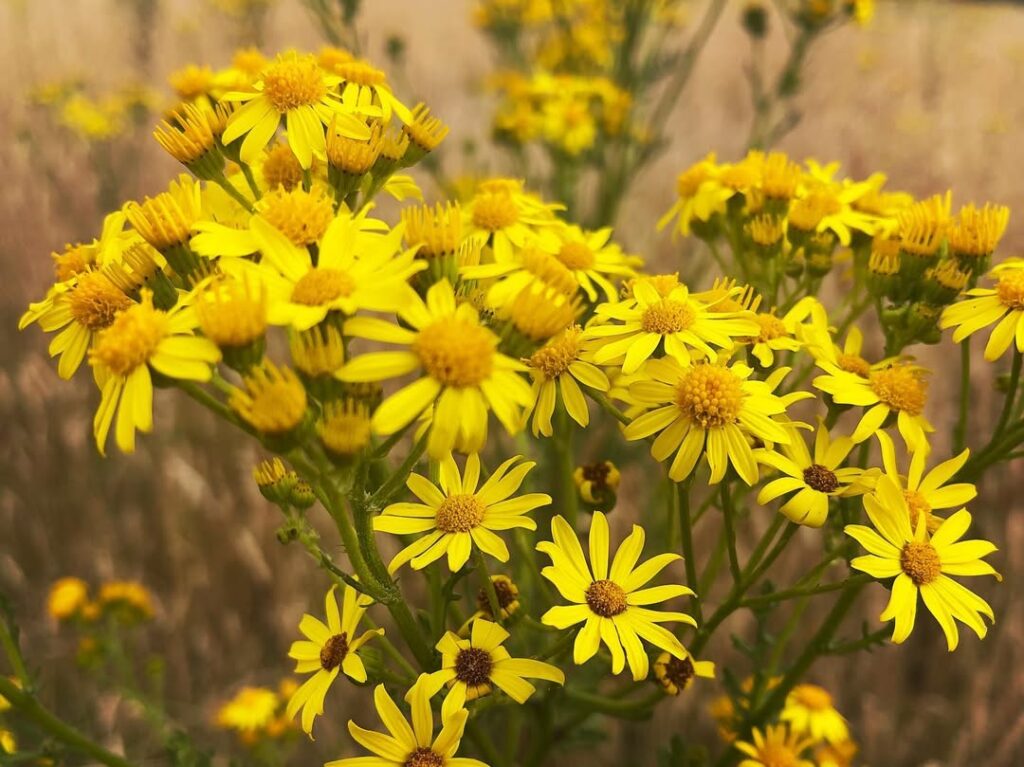
Senecio jacobaea, also known as Ragwort, is a biennial or short-lived perennial with bright yellow flower clusters and deeply lobed leaves. It is often found in meadows and roadsides, but is considered toxic to livestock due to its pyrrolizidine alkaloids.
Senecio linearifolius
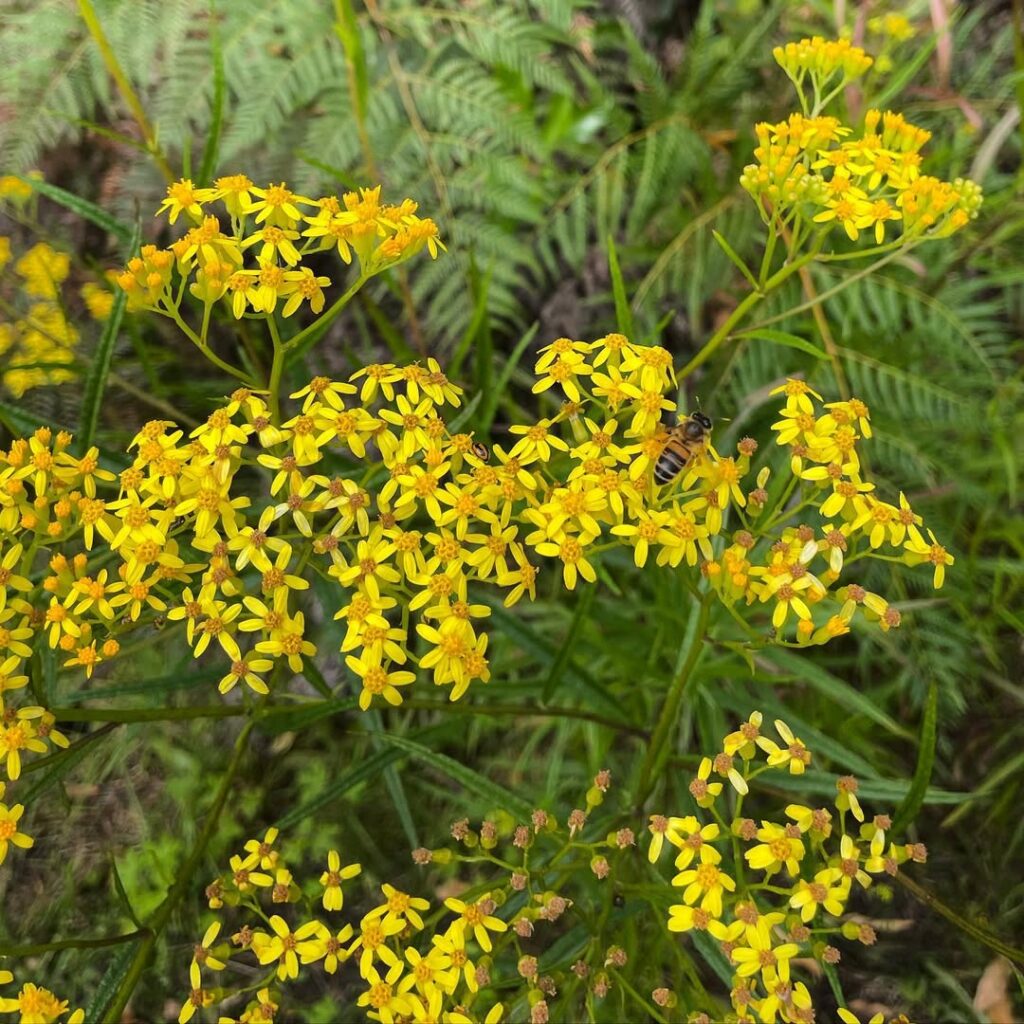
Senecio linearifolius, commonly known as fireweed groundsel, is a fragrant perennial shrub native to southeastern Australia, growing up to 1.5 meters tall. It has linear to ovate leaves, which vary in shape and texture, and produces clusters of yellow flowers, typically blooming from November to March.
Senecio nemorensis
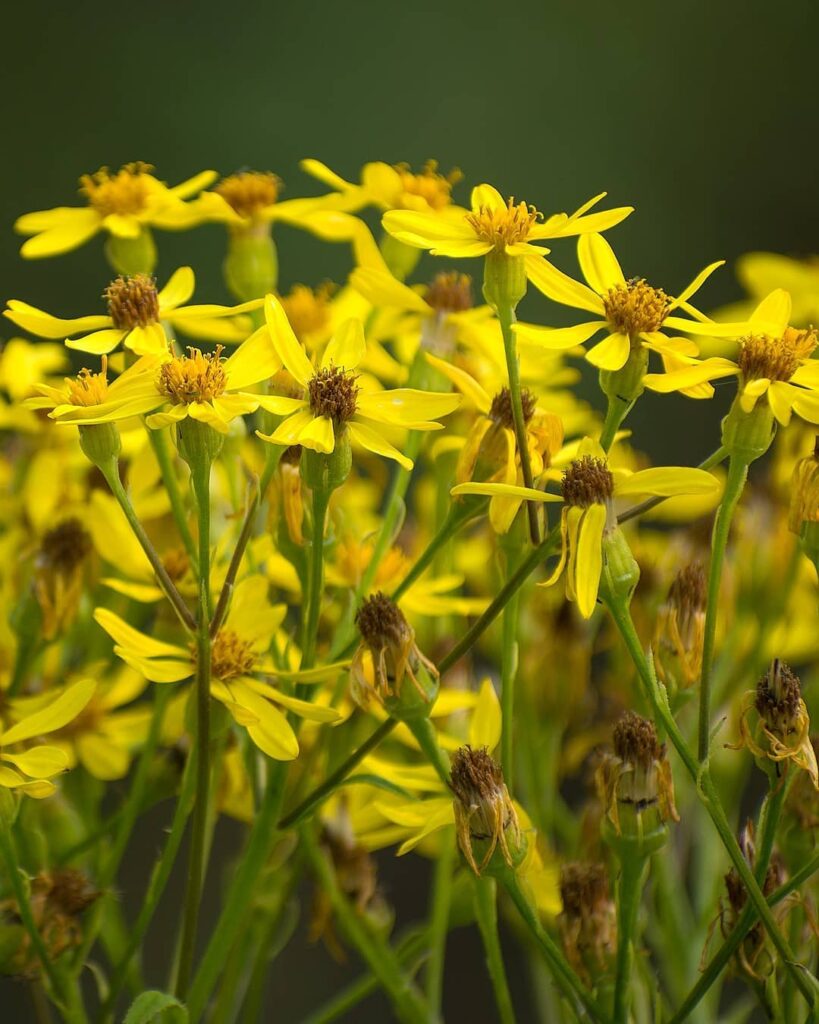
Senecio nemorensis is a perennial herb native to Europe and Asia, thriving in mountainous regions at elevations of 800–1,800 meters. It grows up to 2 meters tall, with yellow flowers and deeply lobed leaves, adapting well to moist, shaded environments.
Senecio ovatus
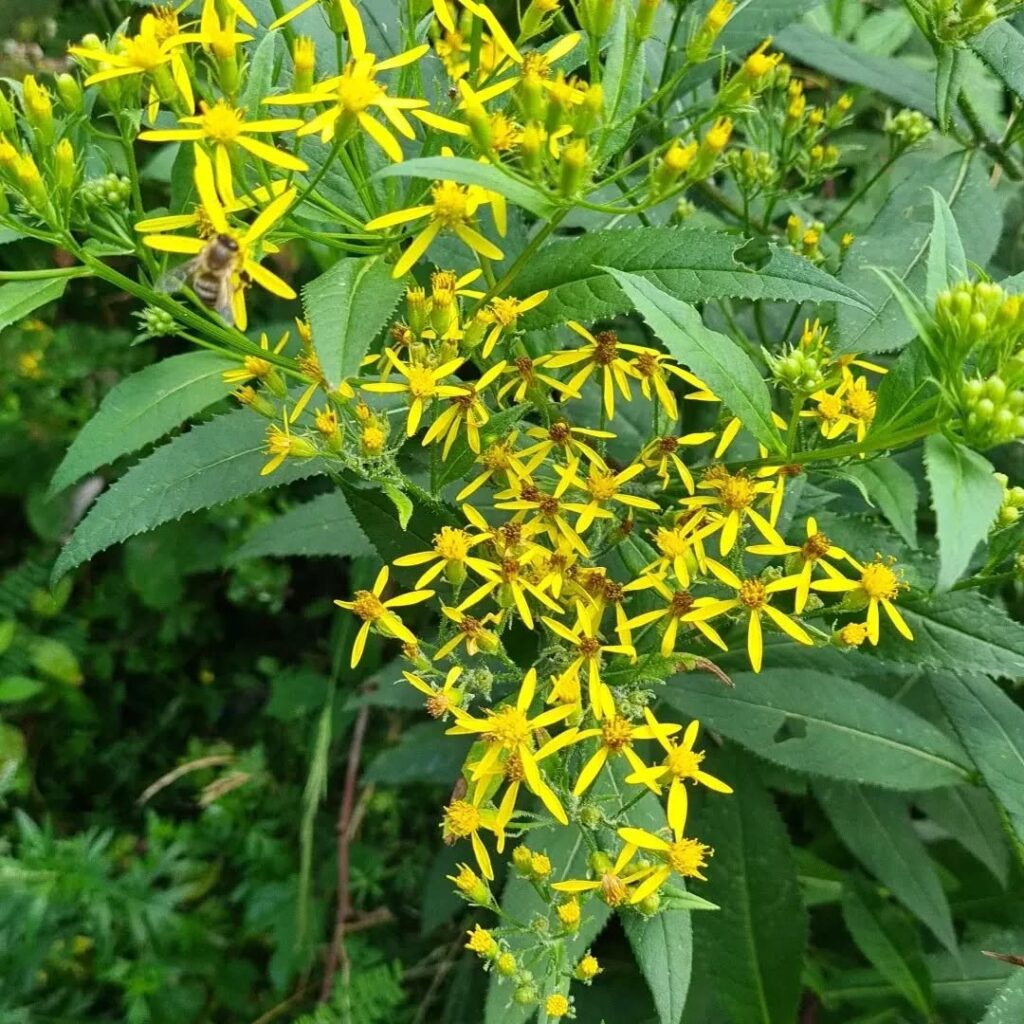
Senecio ovatus, also known as wood ragwort, is a perennial herb native to central Europe, thriving in moist, shaded forests and riverbanks. It grows 50–150 cm tall, with oblong, finely serrated leaves and light yellow flowers that bloom from July to September.
Senecio pulcher
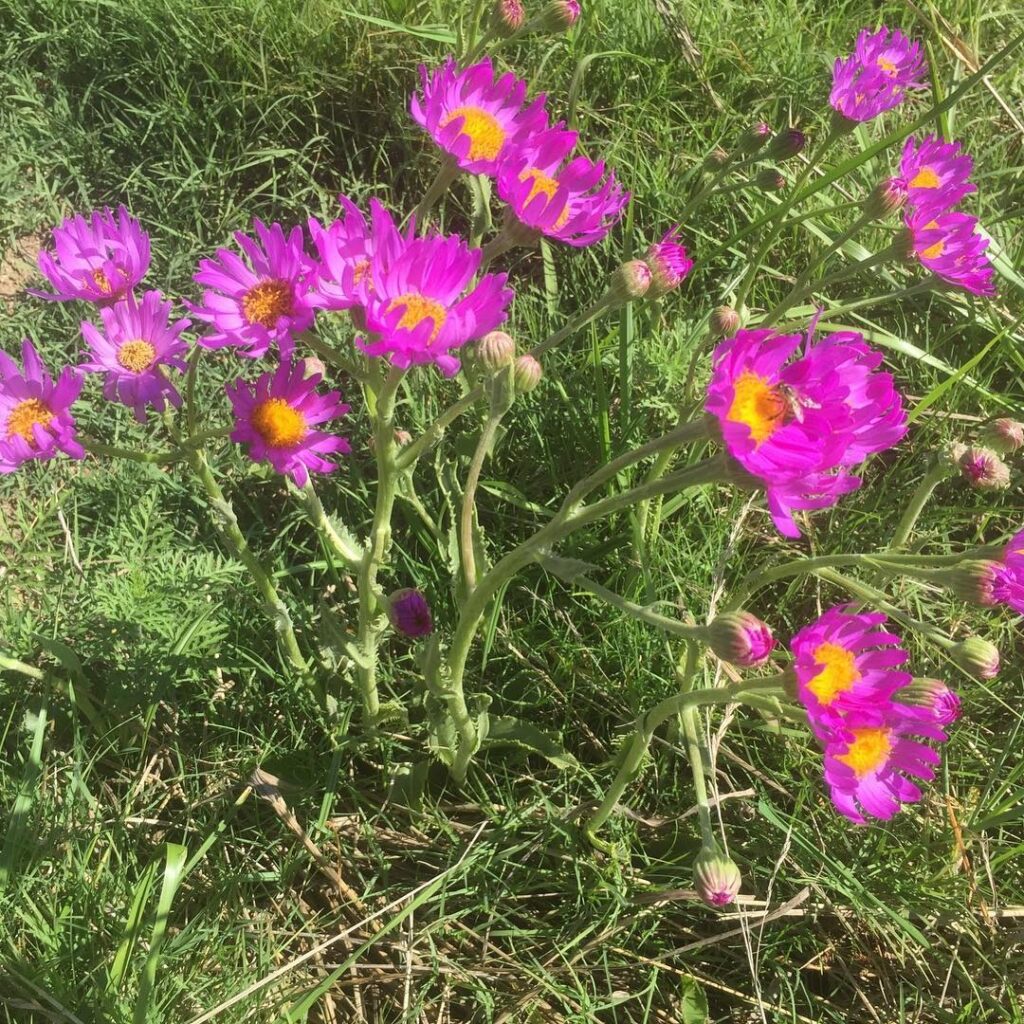
Senecio pulcher is a perennial herb native to Argentina, Brazil, and Uruguay, thriving in wet valleys and rocky slopes. It grows 60–120 cm tall, with cobwebby stems, deeply lobed leaves, and striking red-purple flowers with yellow centers, blooming in late summer.
Senecio squalidus
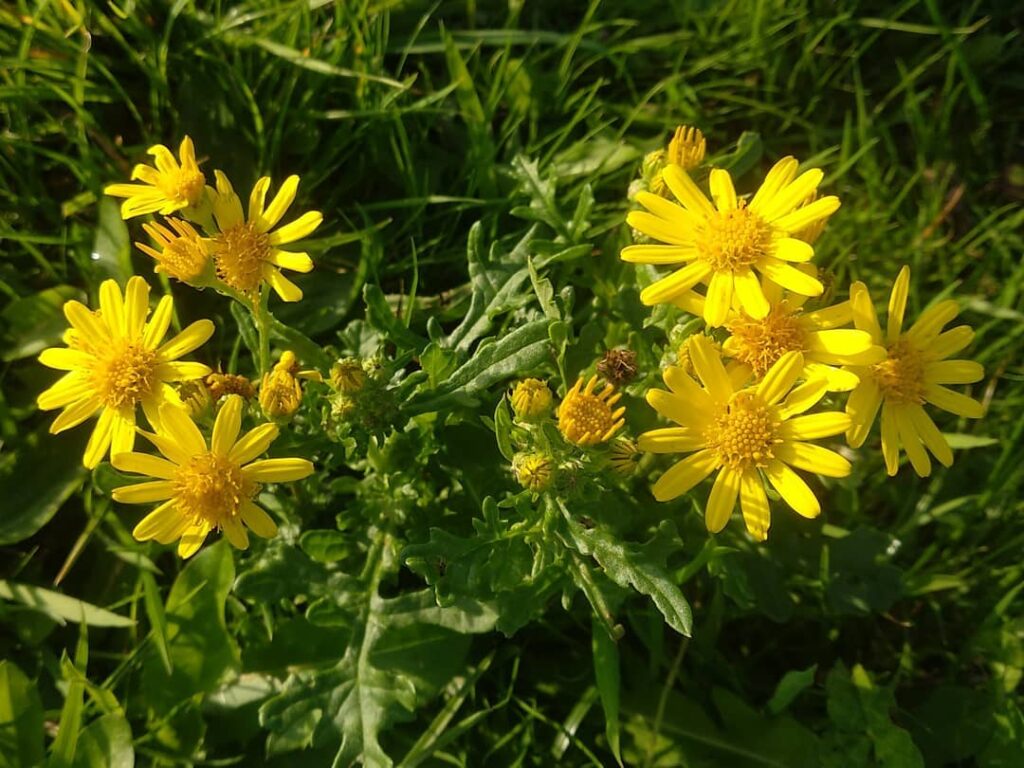
Senecio squalidus, also known as Oxford ragwort, is a short-lived perennial, biennial, or winter annual native to rocky and volcanic regions. It produces bright yellow flowers in loose clusters and thrives in dry, disturbed habitats like railway banks and urban ruins.
How to Care for Senecio Plants
Senecio plants are generally low-maintenance, but they do best with the right conditions. Different types—succulents, perennials, and flowering species—have slightly different needs, so here’s a breakdown of how to keep them thriving.
Light Requirements
- Succulent Senecios (String of Pearls, Blue Chalksticks, String of Dolphins) need bright, indirect light or full sun for compact growth and vibrant color.
- Flowering Senecios (Senecio fulgens, Senecio cristobalensis) grow best in partial sun to encourage blooms.
- Foliage Senecios (Dusty Miller, Angel Wings) tolerate full sun but can adapt to light shade in hotter climates.
Watering
- Succulents prefer infrequent watering—allow the soil to dry completely before watering again. Overwatering leads to root rot.
- Perennials and annuals require slightly more moisture, but still need well-draining soil. Water when the top inch of soil is dry.
- Drought-tolerant varieties like Dusty Miller and Blue Chalksticks rarely need water beyond rainfall.
Soil & Drainage
- Well-draining soil is essential for all Senecios. For succulents, a mix containing sand or perlite helps prevent root rot.
- Flowering Senecios thrive in nutrient-rich soil that drains well. Adding compost can support growth.
- Ground-cover types like Blue Chalksticks do well in sandy, dry soil.
Temperature & Humidity
- Most Senecios thrive in warm conditions and dislike frost. If you live in a colder climate, bring indoor plants inside during winter.
- Humidity-sensitive succulents like Cocoon Plant prefer dry environments to prevent rot.
Propagation
Senecios are easy to propagate through stem cuttings:
- Take a healthy cutting from a mature plant.
- Allow the cut end to dry for a day to prevent rot.
- Plant in dry, well-draining soil and mist lightly.
- Keep in a warm, bright location until roots develop.
With the right care, Senecio plants add charm, color, and texture to any garden or indoor space. Whether you’re drawn to their trailing vines, bold flowers, or soft, silvery foliage, there’s a Senecio for every plant lover!
